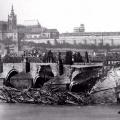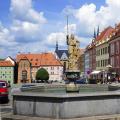Specially protected natural areas (natural monuments)
regional significance
Kuibyshevsky district
Lingonberry boron, lily-of-the-valley boron
Lingonberry boron, lily-of-the-valley boron is located between the Shuitsa and Borovka rivers. The main tree species of the forest are pine, spruce and birch. The undergrowth in it consists of ordinary spruce. The undergrowth is represented by mountain ash, goat willow and brittle buckthorn; in places, common juniper and common raspberry are abundant. In the herbaceous cover, May lily of the valley, common heather, Veronica oakravnaya, Siberian heather, common cuff, hairy hawk, male dwarf and other species are noted. Blueberries, lingonberries and wild strawberries also grow in the forest.
The current state of the forest area is assessed as satisfactory, the level of anthropogenic load on it is low. Boron is used local population only for seasonal picking of mushrooms and berries.
The forest area has a huge impact on ecological state natural complexes, performing such bioecological functions as regulation and filtration of water flow, prevention of soil erosion, preservation of biological diversity, enrichment of the atmosphere with oxygen, influence on climate formation and prevention of air pollution. It is also an important habitat for a variety of flora and fauna, including those listed in the Red Book of the Kaluga Region.
Tract "Baydakovka"

The Baidakovka tract is located on the right slope of the Desna river floodplain. The main tree crops of the tract are birch and black alder with a large admixture of aspen. But there are also areas of 45-50 year old pines, and single oaks.
Its herbaceous cover contains May lily of the valley, forest geranium, meadow foxtail, common oxalis, forest bush, creeping tenacious and other species. There are also lingonberries, blueberries, drupes and wild strawberries.
Park of the estate of the village of Prilepy
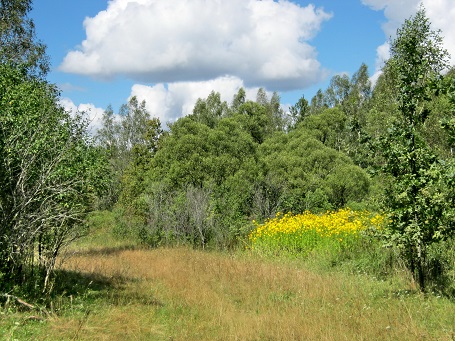
The homestead consists of two parts, separated by an old carriageway. Its western part is lined with lindens and is divided by a diagonal planting of lindens into an apiary and a front yard with a residential building. Eastern having economic value, planted with lindens, oaks, birches and willows. The park has about 100 trees over 100 years old. The herbaceous cover is home to hairy sedge, common runny, forest geranium, meadow foxtail and urban gravilat. Among medicinal and berry plants in the park, there are red elder, medicinal dandelion, field mint, St. John's wort, wild and musky strawberries, common raspberries and other species.
Park of the estate of the village of Petroselie
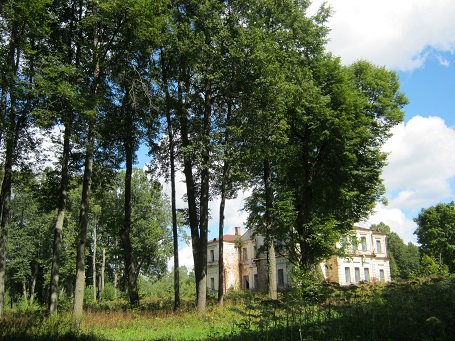
The park was planted in the first half of the 19th century. The garden and park ensemble has well preserved its planning structure and woody vegetation. The entire interior space of the estate has an axial structure along the line of the main house of the estate. The park was planted taking into account the specific landscape of the Lyubushi river slope.
Its forest stand is dominated by linden with an admixture of pine, birch and acacia. In total, there are about 350 trees 150-180 years old. On the southern side of the estate, on a ravine, there are two ponds, which were the southern natural border of the estate. Unfortunately, one of the ponds is currently drained.
Park of the estate of the village of Petroskoe
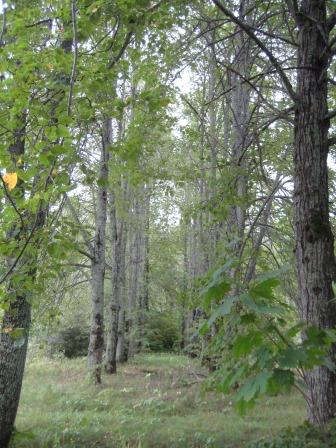
The estate arose in the 19th century on the right bank of the Krivotechka River to the west of the village. Petrovskoe. In its layout, the planting of lindens around the former buildings stands out. Also, common spruce, pedunculate oak, common pine and dangling birch predominate in the stand; there are domestic apple trees, common raspberries, drupes, common pears, wild and musky strawberries, and blueberries. The herbaceous cover is dominated by plantain, meadow and marsh geranium, caustic buttercup, and field violet.
The park of the estate of the village of Dobroselie

At present, fragments of linden alleys of on-farm importance have been preserved from the estate, created in the second half of the 19th century on the right bank of the Snoopot River. The entire territory of the estate is heavily overgrown with small forests (lindens, birches, ash and maples). No landscape elements are observed. In the herbaceous layer, there are common whiteweed, cereal starwort, meadow clover, common and common loosestrife, field mint and other plant species. Among the medicinal species can be distinguished medicinal dandelion, St. John's wort, erect cinquefoil and celandine large.
Zhukovsky district
Spring

The Rodnik tract is mixed forest on the right root slope of the Protva river valley. The main forest-forming species in it is European spruce with an admixture of small-leaved and broad-leaved species. In the undergrowth there is hazel, young growth of European spruce is abundant, juniper is rarely found. Central part The forest area is occupied by a terraced plateau, composed of limestone tuffs, along which streams with small but very picturesque waterfalls flow.
The level of landscape and biological diversity of the natural complex is assessed as high. It is characterized by the presence of orchids, some of which grow in a fairly large number, and the wintergreens that are relatively poorly resistant to the anthropogenic load, which testifies to the good preservation of the forest. Also here are noted the Smirensky fireweed, which grows exclusively at the outlets of pure spring water, the marsh stellate and sod forget-me-not, and the oak mannik and three-flowered bedstraw, which are listed in the Red Book of the Kaluga Region, are quite rare in the region.
The tract in its current state is an example of sustainable preservation and improvement of the environment and resource-reproducing functions of the landscape, an important habitat (growth) of rare and endangered animal and flora, as well as the region's largest population of a rare bryophyte species in Central Russia - river or coastal rhynhostegium.
Park of the Saltykovs estate

The park of the Saltykov estate with regular and landscape parts was created at the end of the 18th century
P.V. Saltykov. A small part of the regular park is located in the northeastern part of the ensemble and consists of four linden alleys that go southeast to the parterre in front of the main house. Internally, the open space of the garden and park ensemble is emphasized by alleys of lindens, oaks and rare pines. The estate includes two dug ponds, observation mounds, walking paths along the Nara River and along its upper edge of the floodplain terrace. Directly opposite the main house of the estate on the bank of the river. An artificial backwater has been preserved in the Nara.
Currently, most of the manor park is a natural forest.
Tract "Mikhalevy Gory"
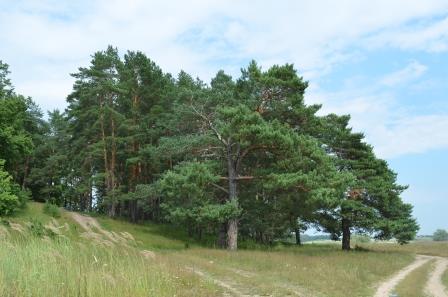
The Mikhalevy Gory tract is a protrusion of the first terrace above the floodplain, on which pine-oak forests grow. This object is the only biocenosis in the lower reaches of the river. Protva, the stand of which is dominated by pedunculate oak and small-leaved linden. The level of biological diversity of the territory is average. There are 15 species of bryophytes, 161 species of vascular plants, 48 species of birds and 17 species of mammals, of which 2 are regionally rare.
At present, the tract is experiencing a significant anthropogenic load, as evidenced by the well-developed road and path network and organized recreation sites on its territory. However, despite this, "Mikhalevy Gory" is a picturesque natural complex and a valuable habitat and growth of a large number of various species of flora and fauna.
Lake "Oglublyanka"

Lake "Oglublyanka" is a large oxbow lake of the Protva River, surrounded by floodplain meadows. Its total length is several kilometers, width - 50-60 meters, average depth - 4-5 meters, water surface area - 21 hectares.
The water body is of great value for birds, as it is a nesting place for regionally rare species, or species that gravitate towards wetlands.
Spruce array on the river. Nara

Spruce array on the river. Nara is located on the right, gentle near-valley slope of the outwash Protvinskaya lowland. The main part of the forest area is represented by middle-aged spruce and aspen forests with the participation of linden and other tree species. Spruce stands are largely damaged by the bark beetle-typographer. The level of biological diversity of the territory is assessed as high.
Pine forests on the river. Protva

Pine forests on the first above-floodplain terrace of the left bank of the river. Protva is the only natural forest near the town of Zhukov, undisturbed by garden plots and recreation areas. The main forest-forming species in it are Scots pine and European spruce, as well as warty birch. The age of the plantings ranges from 45 to 130 years. Common hazel prevails among the bushes. In the undergrowth, a sharp predominance of common spruce is noted.
Pine forests on the river. Protva is an important habitat for rare and endangered flora and fauna listed in the Red Book of the Kaluga Region, such as: Klintukh, Tufted Tit, Umbrella Wintermoon, Gudayera creeping, White Cinquefoil, Laxative Gester and Three-flowered Bedstraw.
The grounds of the production and hunting enterprise "Barsuki"
The grounds of the production and hunting enterprise "Barsuki" are a compact forest in the interfluve of Protva and Nara. Currently, it is included in the boundaries of the state nature reserve of federal significance "State complex" Tarusa ".
Kozelsky district
Fresh water source near the Optina Pustyn monastery
There are three well-known fresh water springs near the Optina Pustyn monastery.
The Pafnutiev Spring is located on the banks of the Zhizdra River, 400 m upstream from the Optina Pustyn Monastery. It is decorated with a well and a pool. The water in it is very soft, containing a large amount of mineral impurities. It is considered curative and is used by the locals for drinking purposes.
"Amvrosievsky well" is located near the monastery skete.
The third spring is located at the monastery pond, 200 m to the north. The water in it is also soft, with a large amount of mineral impurities, it is used to supply water to the monastery.
All sources are unique a natural phenomenon... The water in them is pure, with healing properties, therefore the springs are considered "holy".
Linden alley in the estate with. Volkonskoe
Linden Alley is located on the outskirts of the village. Volkonskoe. Along the left bank of the stream, flowing at the foot of the hill, there are lindens at least 130 years old. On the flat top of the hill, the age-old linden trees are arranged in four parallel rows. The inner two rows make up an alley of century-old lindens about 5 meters wide. The location of the alleys is interesting because the landscape was created, on the one hand, by nature (a sloping hill with a wide flat top, at the foot of the hill - a stream), on the other hand, by a person who created the aesthetics of landscape lines. Large rhythmic divisions (secular lindens) are interspersed with more fractional divisions (apple orchard) on both sides of the alley.
Sukhinichi district
A source of fresh water near the village of Uruga

The source of fresh water near the village of Uruga is located 300 m above the confluence of the Sukhoshanka stream into the Urushka river. This stream drains the right bank of the entire steep slope, along which numerous springs flow. And the most water-abundant of them is the spring near the village of Uruga. The source of groundwater discharge is descending. The flow rate of water in it is quite high and amounts to 17 l / s. Water temperature - 6.3 0 С, mineralization - 0.32 g / l. By chemical composition the water is soft - 3.5 o J. The background of nitrates is slightly increased in it, but in general it is of good quality and meets the requirements of SanPiN 2.1.4.1074-01 for drinking water.
The spring is located in a picturesque forest area, the main forest-forming species of which are spruce, aspen and birch. In its surroundings there are typical exits groundwater plant species, such as touch-me-not, oak starwort, dioecious nettle, bluegrass, veronica rucheynaya. Only pink fireweed can be attributed to the rare species noted at the key.
The current state of the fresh water source near the village of Uruga is assessed as satisfactory. The anthropogenic load on it is minimal. Local residents use the spring insignificantly for taking water for drinking purposes. The source has been trapped, a wooden frame with a roof has been installed at the site of the groundwater outlet.
Medynsky district
The Misida River with a protected landscape at a distance of 200 m in both directions from the water's edge
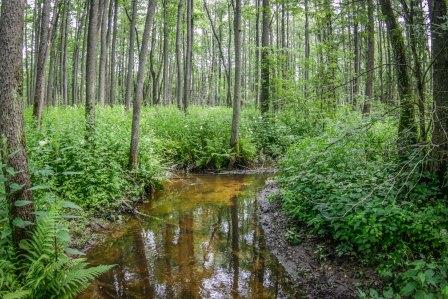
The Misida River is located in the central part of the Medynsky District. It flows mainly in an easterly direction and is a left tributary of the Niga River. The river is 15 km long and about 0.5-3.0 m wide.
In the upper reaches of the river, its floodplain is narrow and mostly forested. Near the Kremenskoye - Medyn highway, it flows along the floodplain black alder forest with numerous exits of springs, to which an unbogged spruce forest adjoins. South of the village. Ivanovskoe, high-grass meadows are noted, and along the river there are black alder forests, in places flooded by beavers. On the right bank there is a mixed forest, in which, along with spruce plantations, old-growth oaks, as well as Norway maple and heart-shaped linden are noted.
In the lower reaches, the Misida becomes wider. Its channel here strongly winds, there are small oxbow lakes, mostly overgrown, small key bogs and outcrops of springs. The meadow floodplain is dominated by the meadowsweet, and along its border and in the lower part of the valley slopes, there are gray alder forests. Above them are spruce forests with an admixture of birch, aspen and hazel, in some places entering the floodplain. Linden undergrowth is found, sometimes oaks are found.
The Rut River with a protected landscape at a distance of 300 m on both sides of the water's edge

The Rut River is located in the northeastern part of the Medynsky region. It is the right tributary of the Protva River, which flows into the Oka. The length of the river is 36 km,
within the boundaries of the Medynsky district - 8 km.
Above p. Egor'e river Rut is rather shallow, but in places with creeks about 2-3 m wide. Below the confluence of the Bychok River, the width of the river reaches 6-7 m, and in some places it reaches 10 m. The bottom is mainly clayey, in places it is stony. River depth on average -
50 cm, in some places - 1.0-1.5 m. The water in the river is clear, there are numerous floating pondweed, the egg-capsule is yellow and the head is simple. Along the coast, thickets of two-branch reed are noted.
In the valley of the Rut 'river, floodplain meadows are noted, the dominant species of which are stinging nettle and forest kupyr. In some places, areas of cereal-forb meadows with the dominance of meadow foxtail were revealed. The banks of the river are overgrown mainly with gray alder forests, in some places there are willows - three-stalked, white and brittle. The open slopes are very picturesque and practically undisturbed.
The Bychok River with a protected landscape at a distance of 300 m on both sides of the water's edge
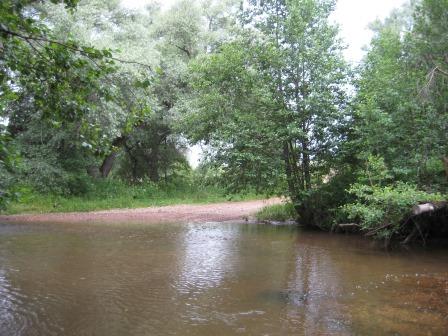
The Bychok (Bychek) river is located in the northeastern part of the Medynsky district.
It flows mainly in the eastern direction and is the right tributary of the Rut 'River, which flows into the Protva River. The length of the Bychok river is 17 km, the width
in the upper reaches - about 1.0-1.5 m, below - 3-4 m.
The banks of the Bychok River are overgrown with black alder and willows - mostly brittle and white. The meadow floodplain is relatively wide (in some places - more than 100 m) and is represented mainly by cereal-forb meadows. It is adjoined by a mixed spruce-small-leaved, in some places spruce forest. There are numerous egg-pods in the river, but there are few pond-beds, since the reservoir is shallow and without dams.
The Zazulinka River with a protected landscape at a distance of 200 m on both sides of the water's edge
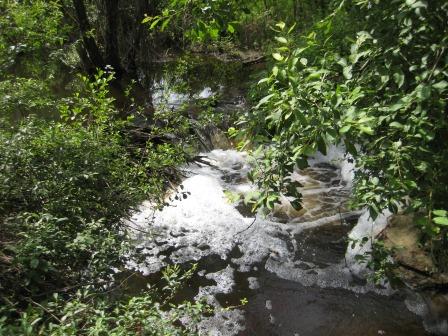
The Zazulinka River is located in the central part of the Medynsky District. It flows mainly in the eastern and northeastern directions and flows into the Luzha River. The river is 13 km long and 1.0-1.5 m wide.
The environs of the Zazulinka River are mainly represented by floodplain black alder forests and meadows.
At der. The Aleksandrovka river is dammed up several times and forms three small picturesque ponds. Below the settlement, in the river valley, there is a floodplain black alder forest, to which a floodplain meadow adjoins, and a damp birch forest with numerous animal paths. In this section, the river is dammed by beavers, so the water in it is unclear.
In the middle reaches of the river, the pond is drained, and its territory is covered with dense thickets of nettles. There are also deposits on the site of former fields, along the edge of which small fragments of dry meadows have formed in places.
Closer to the village. The pyro deposit on the slopes of the valley is almost completely overgrown with multifoliate lupine, as well as birch forest with willow and raspberry bushes. Near the mouth
on the left bank there are mainly swampy and tall-grass meadows, on the right - thickets of black and gray alder.
The Niga River with a protected landscape at a distance of 200 m on both sides of the water's edge

The Niga River is located in the eastern part of the Medynsky District. It flows east and northeast and flows into the Luzha River. The river is 23 km long and the catchment area is 133 km 2.
In the valley of the Niga River above the village. Aduevo is marked by floodplain meadows, some of which are real grass meadows without signs of overgrowth and practically without weeds. Black alder and coastal willows grow in places along the coast.
In the village on the river there is big pond, in the upper reaches partly overgrown with aquatic vegetation. Old willows and willows were found on its banks,
as well as coastal shrub willows and black currants.
There is a small river below the pond. Its valley, on average, does not exceed 100 m, and the width of the river itself is about 1 m. The water in the river is clean and transparent. The shores here are overgrown with individual coastal tall willows, gray and black alder, bird cherry. Numerous meadows are noted along the slopes of the valley.
Near the village. The river Devin is about 3-5 m wide. It is heavily dammed by beavers, and the water in it becomes muddy. On the slopes there are meadows, small birch forests and gray alder forests. A small fragment of a spruce forest with an admixture of aspen, birch and hazel was also revealed. On the right bank, 2 km south of the village. Devin, there are fields, and downstream the river comes a birch and spruce forest, in some places with oak and linden.
Medynka River with a protected landscape at a distance of 300 m on both sides of the water's edge

The Medynka River is a right tributary of the Sukhodrev River, which flows into the Shan River. Its length is 51 km, the catchment area is 264 km 2.
In the upper reaches, the Medynka river is rather shallow; in some places it has dried up, but areas where large deep backwaters have survived have also been noted. Below the village. Doshino, springs flow into it and beaver dams appear, which raise its level significantly, and it becomes more full-flowing. Below the town of Medyn, the river is heavily eutrophied and silted up. A pond near the village. Mikheevo was launched.
The river valley is partially plowed up - there are fields in the floodplain, in some places there are old deposits. The floodplain meadows are well preserved, but they are actively overgrown with shrubs. Among them, both fragments of low-grass meadows, which are quite diverse in vegetation, and high-grass meadows, dominated by stinging nettle, meadowsweet meadowsweet, common willow and forest bush, are noted.
The forest vegetation in the Medynka floodplain is represented by birch forests of warty birch, in some places - with individual oaks. Small gray alder forests are also noted. North of the village. Doshino found a damp birch forest from white birch. South of the village. Doshino and near the village. Ulanovo met a broad-leaved and spruce-broad-leaved forest, and above the village. Mikheevo - spruce plantings.
Peredelsky Park
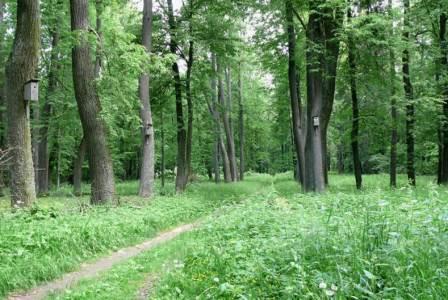
Peredelskiy Park "is a park with landscape and regular planning, which was previously an integral part of the Batashevs' estate.
The old park is formed by picturesque old-growth lime and oak trees. There are almost no shrubs under their canopy and the general impression of free space is created, which is rarely preserved in parks without special care. The herbage consists of common forest and meadow grasses; synanthropic and ruderal species are very few, and they do not form thickets. In the center of the park there are abandoned swampy ditches, which earlier, apparently, formed a complex system of ponds or canals. Also in the park there is a section of a spruce alley, which is younger in age than the rest of the alleys, and individual trees of different species.
A total of 134 species have been identified in the flora of vascular plants in the park. Rare and endangered plants are absent on its territory. However, it is very picturesque and fits well with the surrounding landscape.
The fauna of the park is represented by 3 species of amphibians, 1 species of reptiles and 9 species of mammals, which are quite common for the region, as well as 45 species of birds, mainly of forest and forestry complexes.
The current state of the Peredelsky Park is assessed as satisfactory. It is distinguished by a fairly good preservation for the natural complexes of the Medynsky district and has a great recreational and historical value.
Meshchovsky district
"Cedar plantations"
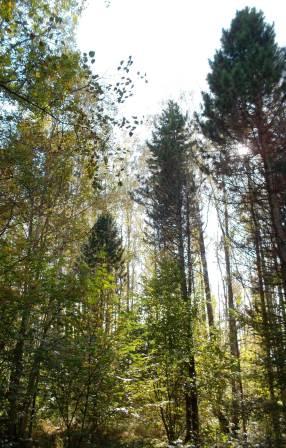
"Cedar plantations" represent the plantings of Siberian pine or Siberian cedar from 1958-1959.
In the Kaluga region, Siberian pine is an exotic plant that grows only with artificial afforestation. The density of tree crowns on the territory of the natural monument reaches 80%, the age is up to 55 years, the largest diameter of the trunks at a height of 1.5 m from the ground is 35 cm. Goat willow, common hazel and mountain ash grow in the underbrush. The herbaceous cover is represented by a small wintergreen, a tenacious creeping, an ordinary odor, ivy-shaped budra, a medicinal letter, a meadowsweet, a forest geranium and other species.
The level of biological diversity of stone pine forests is low. In the flora of vascular plants, only 27 species have been identified that are characteristic of the coniferous forests of the Kaluga region. The fauna of the forest is represented by 14 species of invertebrates, 2 species of amphibians, 16 species of birds and 11 species of mammals. There are no rare and endangered flora and fauna objects on the territory of the natural monument.
The state of the "Cedar plantations" is generally assessed as satisfactory. However, at present, there is a natural thinning of the stand, which is expressed in a large percentage of drying out specimens of Siberian pine.
Borovsk district
Park of the estate of the artist Pryanishnikov

The park of the estate of the artist Pryanishnikov is the remains of a regular and landscape parks with ponds, founded in the second half of the 18th century
A.S. Boltin.
The parks are landscaped and gradually become natural forest... They have preserved in excellent condition linden alleys leading to a cascade of ponds and a stream. On the territory of the landscape park, individual Siberian larch trees, 400-450 years old, have been noted.
City forest in Borovsk

Borovsk city forest is a site of the oldest coniferous forests on the territory of Borovsk and a number of adjacent districts of Kaluga and Moscow regions, which is part of the historical landscape of Borovsk. The main forest-forming species of the forest is pine at the age of 160-170 years I-II bonitet in good condition with spruce undergrowth. In addition to conifers, deciduous trees and shrubs grow here, as well as herbaceous plants typical for flora Central Russia... There are berry bushes - blueberries and raspberries.
In addition to its educational value, the forest area is distinguished by a picturesque hilly landscape, unusual for the surrounding area, adjacent to the Protva river valley, which makes the entire natural complex especially attractive.
Park and garden of Pafnutyev-Borovsky monastery
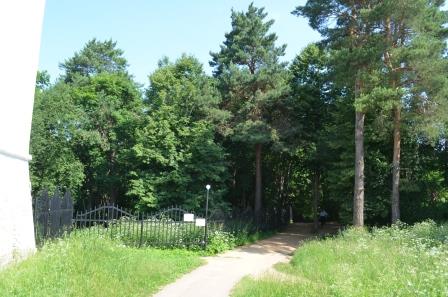
The Park and Garden of the Pafnutyev-Borovsky Monastery is a picturesque park with a cascade of ponds and a holy spring on the banks of the river. Hysteria near the Pafnutyev-Borovsky Monastery.
The park has preserved irregular plantings of linden, Norway maple, elm and willow, as well as a pine park with alleys, connected to the surrounding woodlands.
Park and garden of the Satino estate

The park and garden of the Satino estate are of great interest as an example of a park and economic estate of the 18th century. It contains on-farm alleys of linden and elm trees and fragments of a regular linden park. Fragments of alleys made of elms, oaks and lindens remained from the landscape part of the estate.
Most of the regular and landscape parks are located on the territory of the MSU field base, and the southern part of the estate is almost entirely occupied by summer cottages.
VNIIFBi P park

The park is located on the left bank of the Protva River in the northern part of Borovsk. Judging by the age of the trees that make up the oldest, most valuable part of the park, it was founded in the middle of the 19th century. This is a characteristic manor park, consisting of regular and landscape parts, connected by a wide linden alley (lindens are 180-200 years old). Two larches grow on its territory, which are more than 150 years old.
At present, the territory of the park is partially built up, the paths are asphalted, later planting of trees and bushes was carried out, benches and trash cans were installed.
Spas-Demensky district
Bolshoye Naryshkinskoe bog
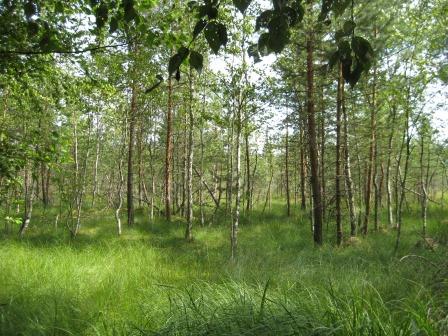
The high bog "Bolshoye Naryshkinskoe" is located on the watershed of the rivers of the Oka and Dnieper basins. It is of great hydrological importance for small rivers and streams, feeding them. The swamp is pine-sphagnum-dwarf shrub-forest. Its surface is covered with a continuous carpet of sphagnum and green mosses, on which shrubs are abundantly developed - whitewash, heather, wild rosemary, blueberry, lingonberry and cranberry.
The swamp is one of the largest raised bogs in the Kaluga region, the largest and most valuable habitat for bird species of the boreal fauna, which have a limited distribution in the region.
The current state of the bog complex is generally assessed as good. It is practically not disturbed by human activity and is an example of an intact raised bog in the zone of coniferous-deciduous forests.
Riding bog Knyazev Mokh
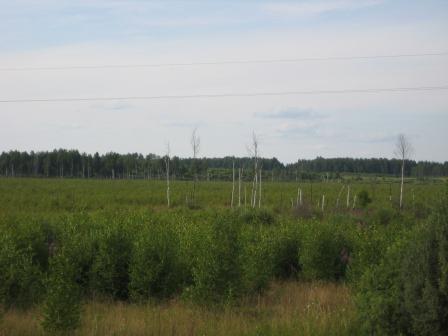
The Knyazev Mokh swamp on most of its territory burned out in 2010-2011. In some places, even a sphagnum cover has not survived on it, and it is covered with polytrichous mosses and the remains of burnt cotton grass.
At present, the territory of the swamp is covered with young shoots of downy birch and willow, less often warty birch and in a lesser abundance of aspen, along the wetter edge - with cattail. In the southern part of the massif near the highway, in some places, skeletons of burnt trunks of birches and pines have been preserved, and among them are low-burnt areas, where marsh shrubs are found in small numbers - Marsh Ledum, Marsh Cranberry and Golubika. On the transitional unburnt fragments of the bog, two rare species in the region were found - Two-rowed sedge and Lappish willow.
Iznoskovsky district
Swamp Agafyinskoe
![]()
The Agafyinskoe bog is a high-type bog that has well preserved its morphology, diverse bog vegetation and adjacent glacial landscapes of the moraine-outwash gently hilly plain. There is no arboreal vegetation in the bog, but cranberry lands are significant. In the center of the marsh massif, sphagnum and green mosses dominate; marsh sedge, whitewash, heather, marsh wild rosemary and lingonberry are found, and marsh sheuchzeria is found in hollows. On the edge of the bog, common reed, marsh calla, broadleaf cattail, as well as medicinal plants - three-leafed watch and marsh cinquefoil were found.
Swamp "Zubovskoe"

The Zubovskoe bog is a sphagnum pine forest with birch, in some places blueberry, in some places with cotton grass. In the central undisturbed part of the massif, extensive thickets of blueberries are noted. Typical rare marsh plants grow here in small numbers - common podbeel and common hamedaphna, as well as marsh cranberries, which are not uncommon in the region. The medicinal marsh wild rosemary is abundant in the bog; marsh blueberries and lingonberries are numerous. A number of marsh sedges have also been identified, and in the vicinity of the massif a western species of cereal was found - soft bukharnik.
Swamp "Sigovskoe"

The Sigovskoe bog is a high-type bog that has well preserved its natural environment and the adjacent glacial landscapes of the moraine-outwash gently hilly plain. Before reclamation works, it was an overgrown glacial lake. At present, thanks to a colony of beavers that settled in the swamp, the drainage ditch was blocked by a dam of large trees and bushes, the water level has recovered, and open bodies of water have appeared.
Most of the bog is overgrown with small birch forests and vaginal cotton grass. Typical species of the sphagnum bog (cranberry, blueberry, hamedaphna vulgaris, marsh sedges) were recorded only along the eastern margin. A small water mirror with muddy shores and a raft along the edge has survived, where thickets of aquatic plants (floating pondweed, Canadian elodea, etc.) are developed. Along the drying up banks and near the stream, big variety liver mosses. Of the rare and endangered flora objects in the Sigovskoye bog, the white frit, common hamedaphne and pemphigus are noted.
The land of the state farm "Semenovsky"
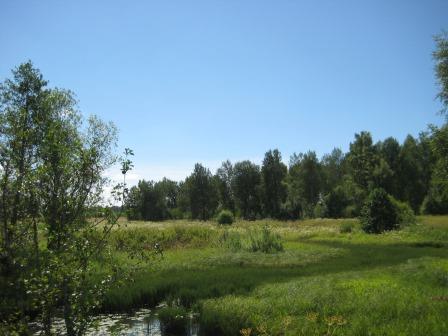
The grounds of the "Semenovsky" state farm are forest lands, swamps, the Zhelonya River and numerous streams, characterized by a rich biodiversity of flora and fauna. There are large tracts of cranberries, medicinal plants and plant communities from the Ice Age. The banks of the river and streams are abundantly overgrown with willows, raspberries, elderberries and other shrubs. In the forests, spruce, pine, birch, oak, aspen, alder, bird cherry and other species grow. Perch, roach, chub, gudgeon, pike, ruff, etc. are found in the river. Among the representatives of the animal world, beaver, muskrat, otter, elk, wild boar, roe deer, marten, squirrel, mink, polecat, raccoon dog, badger, lynx, bear, wolf, hare, fox are noted. Birds are very numerous.
Hill "Shatrishchi"
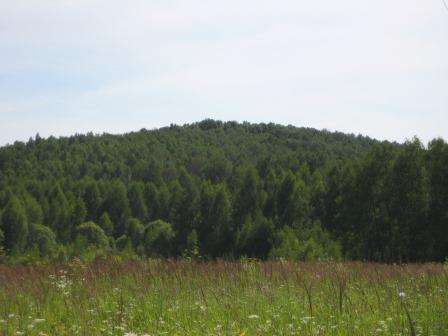
Hill "Shatrishchi" - a kame formation of the melting times of the late stage of development of the Moscow glacier. Kam has well preserved its original, classic for of this type geomorphological objects, shape. Visually "Shat-Gora" is perceived as a real mountain creature. At its top, there is an Old Believer cemetery, at the foot there are the remains of ancient stone workings from the Stone Age.
Maloyaroslavets district
Park "Island"

Park "Ostrov" is a natural complex located on big island Sukhodrev River and well preserved various biocenoses.
It is a mixed forest surrounded by floodplain meadows. The main type of forest vegetation in the park is pine plantations. different types... The stand of the most common type of forest phytocenoses - herb pine forest - is formed by Scots pine aged 90 years or more with an admixture of birch and aspen. Rare undergrowth is represented by birch and aspen. In a well-developed layer of shrubs, common raspberries, common mountain ash, common bird cherry and common honeysuckle are noted. In the herb-dwarf shrub layer, wild strawberries, monkey loosestrife, drupe, female cochinea, Veronica Dubravnaya, Onega hawk, sheep fescue, and other species were identified.
Meadow vegetation is represented mainly by grasses and cereal-forb groupings. The basis of the grass cover here is formed by meadow fescue, creeping wheatgrass, common yarrow, common cuff, awnless rump and caustic buttercup.
The fauna of the park is well preserved and representative for the natural communities of the Maloyaroslavets district. In the park "Ostrov" 61 species of birds of the forest complex nest, presumably nest or visit the territory. It contains 14 species of mammals, including the common fox, the European mole, the white hare and the common squirrel.
Park "Ostrov" is a favorite place for recreation of the population of the village. Detchino. It has a well-developed road and track network. On its territory there are places for recreation, a football field, jogging tracks and ski trails. The park also has non-timber forest resources suitable for development.
Park "Dubki"

Park "Dubki" is located in the northeastern part of Maloyaroslavets, on the right near-watershed root slope of the Luzhi River. It appeared about 100 years ago, and to date, both relatively closed stands of this age and individual old trees among the younger ones have been partially preserved in it.
The park has a free layout and consists of many more or less open spaces of different-sized lawns. The spaces formed by oak tapeworms, groups and groves flow freely into one another and carry the visitor along softly traced dirt paths. The main entrance to the park is from the east, from the city center. The entrance path forks in it, and the next two go around a large lawn, around which oak trees are planted in rows. Further, the northern path forks into several small paths that go down the slope and are connected by a path that runs along the stream. As you move from the main entrance, the landscapes - countless variations of tree species with dark trunks and rounded crowns against the backdrop of light open or closed lawns - become more intimate, but are complemented by distant views of the Luga River valley.
Park "Dubki" is a rare example of an urban landscape oak park late XIX century, a valuable part of the urban environment and has a special cultural, aesthetic, recreational and recreational value for the residents of Maloyaroslavets district.
Duminichsky district
Pinery
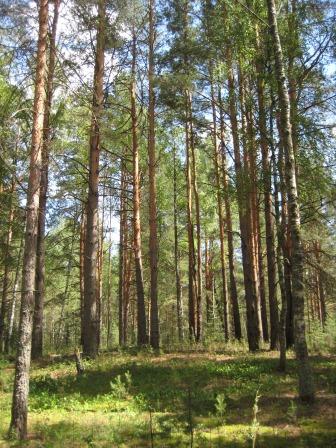
Pine forest is a pine plantation with a rare admixture of birch, aspen, mountain ash and willow, located on a sandy dune hill on the left bank of the river. Bryn south of the village. Duminichi.
The vegetation of the forest area is represented by various types of pine forests: bracken, birch-aspen lily of the valley and forbs, green moss (cowberry, bilberry, sphagnum), as well as aspen birch, swampy black alder, young aspen, spruce (sorrel and zelenchuk) and vegetation in meadow edges dry land. However, the predominant type of communities in it are green moss pine forests with very rare, individual oaks. Along the bank of the Bryn River, single old-growth oaks are observed.
The pine forest has a huge impact on the ecological state of natural complexes, performing such bioecological functions as regulation and filtration of water runoff, prevention of soil erosion, preservation of biological diversity, enrichment of the atmosphere with oxygen and absorption of carbon, influence on climate formation and prevention of air pollution. It is a valuable habitat for a large number of rare and endangered species of flora and fauna, including those listed in the Red Book. Russian Federation and (or) the Red Data Book of the Kaluga Region.
Oak groves in the floodplain of the river. Zhizdry

Oak groves in the floodplain of the river. Zhizdra are rare natural communities of deciduous forests in the Kaluga Region, formed in the valley of the Zhizdra River. They include sparse meadow-edging light oak forests and "dark oak forests". The age of oak trees ranges from 200 to 70 years. There are practically no young oaks (20 to 70 years old), but there is abundant undergrowth. In oak forests, remote from the river, the stand is more closed, there are other broad-leaved and coniferous species.
Floodplain oak forests are a valuable habitat (growth) of a large number of rare and endangered species, including those listed in the Red Book of the Kaluga Region. European euonymus, marsh turkey, swallow's wort, hairy St. John's wort, Siberian iris (iris), lilac hawk moth, reddish moth, raspberry moth, small order ribbon, diamine checkerboard, changeable bumblebee, mossy bumblebee, and other species of gaich are noted here. A Russian desman, listed in the Red Book of the Russian Federation, was found in ancient lakes in oak forests.
Coniferous plantations

Coniferous plantations are located near the village. Dubrovka, Duminichsky district, and represent a relatively small area of clean spruce plantings, in some places - strongly thickened. In the sparse undergrowth, common hazel, warty euonymus, brittle buckthorn, forest honeysuckle and other species are noted here. The undergrowth consists mainly of deciduous trees - linden, oak, sycamore maple, warty birch and smooth elm. In damp places, near the brook and near the ditches of the road, ash willow, bird cherry and black alder grow.
The current state of the forest area is assessed as unsatisfactory. A significant number of spruce stands died in 2013-2015 as a result of damage by a bark beetle-typographer. Sanitary and recreational activities and reforestation work are being carried out.
Tarusa region
The Pesochnya river bank is a picturesque landscape of the Pesochnya river valley, on the slopes of which mixed forests grow, where M.I. Tsvetaeva.
The first information about the estate is XVIII century... Then this village was called Ilyinskoe and belonged to Prince A.M. Golitsyn. There was a house with outbuildings and an orchard in it. In 1827 the estate passed to Prince D.S. Gorchakov, who in the middle of the 19th century built a new house and the Assumption Church, created a park.
The park consisted of regular and landscape parts. There were planted spruces, lindens, pyramidal poplars, oaks and willows, as well as introduced plants - larch, cedar, Weymouth pines, Tatar maples and fir. The park also had a system of ponds with islands and separate on-farm alleys.
Currently, the park is in a badly neglected state. The road and path network has been lost. The southern spruce alley has thinned out a lot. The ponds were drained.
Park with. Baryatino, despite its neglect, is an excellent example of a mixed-type manor park, widespread in the era of classicism, and is of great historical, aesthetic and environmental significance.
The manor complex was formed at the end of the 18th century and belonged to the wealthy Kaluga landowner S.A. Chaplin. It contained the Church of the Ascension, a manor house, a stud farm, two orchards, two ponds and a regular park.
At present, fragments of the park and the remains of dams from cascade ponds have been preserved from the entire ensemble.
The manor park that belonged to the princes Khilkov, judging by the age of the trees, was founded in the late 18th - early 19th centuries. This is a classic landscape park, where there is not a single straight alley. The trees in it are planted in beautiful picturesque groups, each of which is carefully selected according to the composition of the rocks. The stand includes lindens, poplars, pines and elms.
The current state of the park with. Ilyinskoe is assessed as unsatisfactory. Fruit orchards have been lost. Most of the alleys and paths of the park have not survived.
Bank of the river Tarusa section "Ilyinsky pool"
The bank of the Tarusa river, the "Ilyinsky pool" section, is a picturesque section of the Tarusa river valley, described by K.G. Paustovsky in the story "Ilyinsky pool".
The manor complex was formed in the 18th century. The park was founded at the turn of the 18th-19th centuries on the high slope of the right bank of the Tarusa River. It consists of a regular part and a heavily overgrown landscape part. The forest stand of the park is dominated by lindens and elms over 200 years old, there are old aspens, birches, ash, poplar, rakita and mountain ash (150-200 years old).
Currently, the park has been launched, its parterre is planted with fruit trees. The large "prolific" garden adjoining the landscape park on the east side has not survived. The road and path network and some alleys have been lost.
At the turn of the XIX-XX centuries in the village. Ladyzhino was a two-story wooden house, owned by the Marquis Maria Lvovna Komponari. It was surrounded by a park in which lindens, spruces, jasmine and lilacs grew. At the beginning of the 20th century, the poet Konstantin Balmont and the writer Alexei Tolstoy were here.
Currently in the village. Small fragments of a lime park have been preserved in Ladyzhino.
The estate is located on the southwestern outskirts of the village, in the upper, gentle part of the northern slope, descending to the Pesochna River. The park, with an area of about 1.5 hectares, is close to a rectangle in plan. Along it southern border there is a row of linden trees over 100 years old, behind which a ditch, possibly a former boundary ditch, has been dug. Rows of lime trees also run along the eastern and western borders, but younger ones - 60-70 years old. In the eastern part of the park there is a ravine, in the upper reaches of which a dam has been built to support a small pond. Several hundred-year-old lindens grow along its banks. The rest of the open space of the park is occupied by a clearing, in the north-western corner of which there is a dilapidated well.
Park with. Trubetskoye is the remains of an old orchard, lined with squares of lindens, and a small landscape park with ponds on the site of a former estate.
Estate park with. Sivtsevo
The village of Sivtsevo (Sivtsovo) in the 18th century was in the possession of the ancient noble family of the Sumarokovs. The manor was mainly formed, judging by its history and stylistic features of the ensemble, in the third quarter of the 18th century. By 1767, it had already acquired the borders and basic planning features that have survived to this day. It had a manor's wooden house and two ponds. Obviously, the park had already been laid out then.
The park consists of regular and landscape parts. The regular part is a chamber linden garden with straight alleys and rows of 100-200 year old trees. The landscape part of the park is very spacious. In it, a parterre descends from the main house down the slope, which forms a linden grove with sparsely planted trees from the side of the ravine. On the border of it and the parterre, there is a viewing platform on a hill. On the other hand, the parterre is formed by a number of acacia trees, individual lindens and late maples, spruces and birches. Old oaks, pines and willows also grow in the park.
Currently, the park is overgrown in places, many old trees have fallen out, the composition of the regular parts of the park has been disrupted. The road and path network was erased, new paths appeared. Small architectural forms, the design of the entrances to the estate, orchard and berry fields have been lost. A spruce alley has been planted on the parterre along the southwestern facade of the house. The bridge across the Dryascha River, the southern entrance to the estate, has not survived.
Ferzikovsky district
Park with. Bogimovo
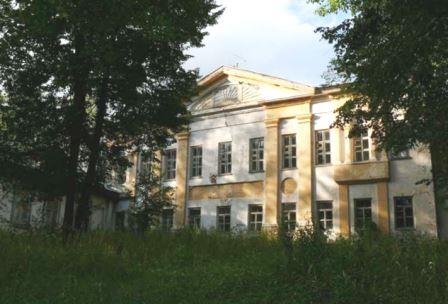
Bogimovo is an old estate, which at the beginning of the 18th century belonged to
V. Pronchishchev. The foundation of the park began in 1820, when the first linden alleys appeared on the territory of the estate.
Currently in the park with. Bogimovo preserved fragments of linden alleys of the early and mid-20th century, fragments of spruce and poplar plantations, a pond.
Park with. Koltsovo
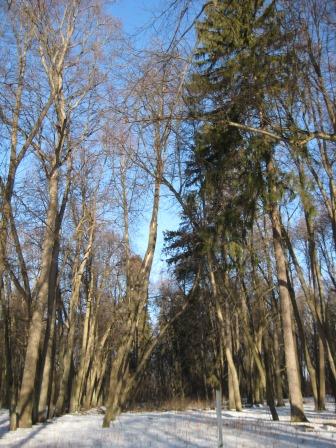
The estate was founded at the turn of the 18th-19th centuries. The park complex consists of regular and large landscape parts. The regular part is symmetrical about the central alley - triple with alternating limes and firs. The paths are lined with linden trees. In one part, they fan out from the house, in the other, they form a crown in plan. The side alley is continued by an alley of larch trees. The landscape part includes the entire slope to the Oka River with old excavations of the Karrovo sandstone.
Cascade of ponds in the village of Bebelevo
The cascade of ponds consists of three ponds, built in 1904 on a small stream and separated by dams.
Currently, one pond has survived, located in the center of the village of Bebelevo.
Forest area "Bor"
Forest area "Bor" is a forest area, the main forest-forming species of which are Scots pine with an admixture of pedunculate oak, birch and aspen. Hazel, buckthorn, mountain ash and linden grow in its undergrowth. There is no undergrowth. In the ground cover, which is not very diverse, representatives of the Cereals family predominate.
The forest area is a valuable habitat (growth) of a large number of rare and endangered species of flora and fauna, including those listed in the Red Book of the Kaluga Region.
Kirovsky district
Riding bog Berezhkovskoe
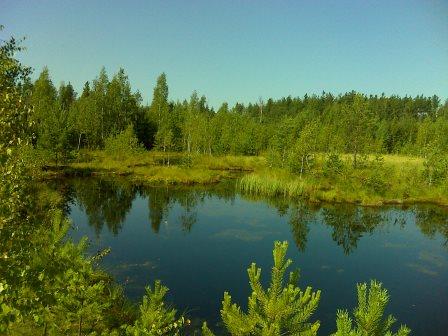
The Berezhkovskoe bog is a high-type bog in the landscape zone of alluvial-water glacial origin time of the late stage of development of the Moscow glacier. Its surface is covered with small forests of pine and birch, and wild rosemary and cranberry are widely developed in the herbaceous cover.
The swamp massif consists of the three most swampy areas, united by swampy forests into a single circular hydrological system. Western part peat deposits were partially worked out in the last century. Open reservoirs in the waste space are currently of certain interest from the point of view of restoring the biodiversity of disturbed areas of the bog. The eastern and southern parts do not have any special hydrological disturbances, since the swamp is drainless and retains its hydrological regime well.
The Berezhkovskoe bog is a valuable habitat (growth) of a large number of rare and endangered flora and fauna objects, a key ornithological territory of Russia of the local rank "Faience peat mining". It is very picturesque and has a special aesthetic, recreational and scientific value.
Riding bog Prince Mokh

The Knyaz Mokh bog is a typical raised bog with characteristic pine-cotton grass and pine-sphagnum associations. On the edge of it, there are transitional areas with willows, and in the western part - typical ridge-hollow areas, areas of pine forests with sphagnum and cranberries, pine forests with wild rosemary and other plant communities. Apparently, some areas in the eastern part of the bog were previously covered by forest fires, since there are no typical bog shrubs and sundews. In general, the bog complex is characterized by a small abundance of species, but this is typical of intact and homogeneous sphagnum bogs.
The raised bog Knyaz Mokh is an undisturbed sphagnum bog, an important habitat (growth) of rare and endangered flora and fauna listed in the Red Book of the Kaluga Region, as well as resource-valuable berry bushes and medicinal plants.
Obninsk
Dacha "Bugry"

Dacha "Bugry" or "Konchalovsky forest" is a coniferous-deciduous forest with plantings of introduced species. In its western part, spruce forest prevails, in which the shrub layer is practically not expressed, and the grass cover is depressed or typical for spruce forests. The eastern part of the massif is occupied by a broad-leaved forest, the stand of which is dominated by old pines and spruce with an admixture of aspen and birch. There are also small areas of aspen in the forest. On its northern border, there is a small birch grove.
In the southern part of the forest there is the estate of the famous artist P.P. Konchalovsky, known as "Bugry".
The level of biological diversity of the natural monument is assessed as high. A total of 234 species of vascular plants, 54 species of birds and 7 species of mammals have been recorded here. Of the rare and endangered flora objects in the forest, Lunnik reviving, listed in the Red Book of the Kaluga Region, is noted.
Natural objects of particular value for the region have not been noted in the specially protected natural area. In fact, the dacha "Bugry" is a green zone of the city of Obninsk and is used by the population for recreational purposes.
"Lower Park"
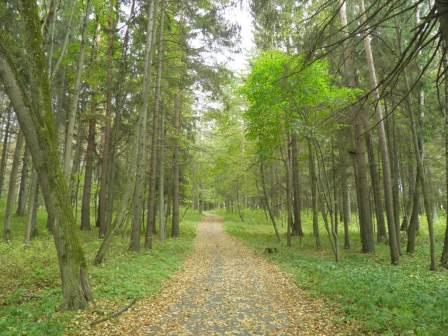
"Lower Park" is a forest area located on the southwestern outskirts of Obninsk. Its southern part is represented by an old spruce forest, in the undergrowth of which hazel, warty euonymus, mountain ash, forest honeysuckle prevail, in the grass layer - oxalis, European hoof and other species. As the relief increases, the spruce forest turns into an old pine forest with tall pines up to 30 meters high.
In the central part of the massif there are two deep ravines, along the bottom of one of which there is a stream known as "Repinka". Their slopes are overgrown with aspen, birch with an admixture of oak, linden and elm. In the undergrowth, Hazelnut prevails, in the herbaceous layer - Medunitsa unclear, Hairy sedge, Zelenchuk yellow, Male dwarf and other species.
In the western part of the Lower Park there is a birch grove. The age of the birches here exceeds 70 years, the diameter of the trunks is 50-60 cm. There is practically no undergrowth and undergrowth in the grove due to the high level of anthropogenic impact.
The level of biological diversity of the natural monument is assessed as average. A total of 145 species of vascular plants, 40 species of birds and 7 species of mammals have been recorded here. Rare and endangered species in the forest are not registered.
"Lower Park" is a favorite vacation spot for local residents.
Przemysl region
Pine forests on the dunes

“Pine forests on dunes” is a sparse herb-lichen-green moss pine forest with rare undergrowth of birch, pine and oak, located on a terraced area between the Oka and Zhelovi rivers, within the ancient valley complex of the Oka river. The undergrowth in it is poorly developed and is represented mainly by the Russian Broom, Common Juniper, European Euonymus and Rowan ordinary. In a sparse grass-shrub layer grow Orlyak ordinary, Wild strawberry, Whitebeard sticking out, Ortilia one-sided, Veronica officinalis, Round-leaved bell, Bluegrass oakgrass, Hairy gum, Wilted barley, Common sorrel, Violet tricolor, Sheep violet, Amazing Violet sheep, small rattle and other types. Typical taiga species were also noted, such as Bilberry, Common lingonberry and Double-leaved, and plants from the nemoral suite - May Lily of the Valley and Kupena officinalis. Common Heather is common.
"Pine forests on the dunes" are of exceptional value for the preservation of biological diversity, and the presence of dune formations with a height of 2-3 to 5-7 m within the ancient valley complex of the Oka River, and on the western side of the site (Oka floodplain) - 12-15 meters , make them unique for the Kaluga region.
A fresh water source near the village of Gremyachevo

Keys on the radical right slope of the river. The Oki are connected with the Aleksinsky and Tarussko-Mikhailovsky aquifers. Most of them have a specific flow rate of no more than 1-2 l / s. In the eastern part of the slope, not far from the Assumption Monastery, there is a spring with a flow rate of more than 10 l / s. All sources are top-down. The waters in them are hydrocarbonate-calcium, hard.
The botanical composition of the herbaceous cover in the vicinity of the springs is the same, but the density of herbaceous vegetation in the areas of tuff development is higher. In places of massive outcrops to the surface of groundwater, thickets of black alder and sticky alder are observed. The lower part of the slope (the coastal strip of the Oka River) is completely swampy and overgrown with shrubs and marsh vegetation.
Fresh water source near the village of Bragino
In the vicinity of the village of Bragino, there is a well-preserved natural erosional relief with many springs, natural outcrops of rocks from the Aleksin and Mikhailov horizons of the Lower Carboniferous. Erosional slopes are covered with woody, shrub and various herbal vegetation. Due to the abundance of springs, the lower part of the river canyon does not freeze in winter, and the grass cover remains green. Sources of fresh groundwater are descending, high flow rates. The water in them is hydrocarbonate-calcium, hard, low-iron.
Park with. Akhlebinino

Park with. Akhlebinino is a manor park located on the right bank of the river. Oka, 0.5 km from the Kaluga-Tula highway.
Park with. Akhlebinino is part of the Akhlebinino estate and is included in the boundaries of the cultural heritage site of regional significance Akhlebinino Estate (fragments): the main house (fragments) with a grotto, underground passages and retaining terraces, the western wing, a chapel, a park (fragments).
At present, a system of on-farm alleys has been preserved on the territory of the park, in the stand of which lindens, spruces and larch trees predominate.
Dzerzhinsky district
A group of ascending springs on the Veprika river

The group of ascending springs on the Veprika River is a unique, ecologically, scientifically, aesthetic and recreationally valuable natural complex, consisting of water source and the surrounding natural landscape.
The water source is a group dispersed on an area of 1 hectare outlet of groundwater of an ascending type in the form of numerous seething griffins. Groundwater discharge occurs from the confined Venevsko-Tarusa horizon near the border of its pinching out. The water-bearing rocks are fractured limestones of the Tarusa and Venev stratigraphic horizons of the lower section of the Carboniferous system. In the bedding of rock layers, due to the location of the terrain in the inner part of the Kaluga ring structure, there is a sharp rise and fall with an amplitude of up to 200 m and an angle of incidence up to 11 °, which creates a head of groundwater.
The spring water is hydrocarbonate-calcium with a dry residue of 0.3 g / l and a total hardness of 5 meq., Practically does not contain iron. The flow rate of the main reservoir with six griffins is approximately 13-15 l / sec.
Groundwater outlets are surrounded by a damp floodplain meadow, which, like the Veprika river bed, is partially overgrown with bushes. Above the springs on the right bank of the Veprika there are open slopes with meadow vegetation, on the left there is a pine-green moss forest.
The level of biological diversity of the specially protected natural area is high. In total, 357 species of vascular plants were recorded here, among which 6 (Keleria large, Baltic Palchatokorennik, Bloody Palchatokorennik, Young shoots, Zimolyubka Umbrella, Hemp Bush) are listed in the Red Book of Kaluga Region, 2 species of amphibians, 1 species of reptiles and 2 species of mammals.
Sacred lake
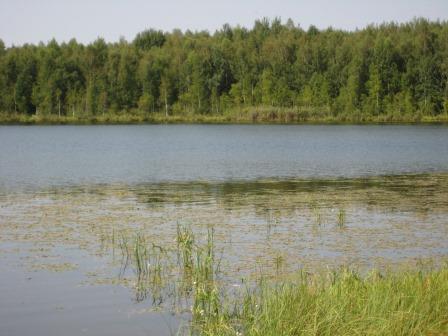
Lake Svyatoe is a lake of glacial origin with a pronounced glacial ridge of loam. It is the source of the Putynka River, a tributary of the Sukhodrev. The lake is powered by atmospheric precipitation and groundwater from the Quaternary and Miocene aquifers. At the bottom there are deposits of sapropel belonging to the therapeutic mud of the Moltaev type.
Lake Svyatoe and its surrounding landscapes are a valuable habitat for a large number of rare and endangered flora and fauna, including those listed in the Red Book of the Russian Federation and (or) the Red Book of the Kaluga Region: Swamp Sheikhceria, Rdesta Longest, English Rosyanka , Round-leaved sundew, Grass head, Marsh sedge, Graceful fluffy, Baltic palchatka, Obovate sundew, Small pemphigus, Osprey, etc.
City forest of Kondrovo

The city forest is located within the city of Kondrovo on the right bank of the Shani River.
90% of it consists of pine and spruce stands with an admixture of birch and aspen of high bonitet.
The main age of the stand is 100 years, but there are areas with young pine plantations in clearings. On the territory of the pine forest, various types of forest are noted, characteristic of central region subzones mixed forests: lichen pine forest (on dry sandy loam soils typical of taiga forests), green moss spruce forest (on fresh soddy-podzolic gray forest soils) and sphagnum sphagnum forest (in low places) with a predominance of sphagnum moss in the ground cover. Its undergrowth is rich in red mountain ash, hazel, warty euonymus, buckthorn. The herbaceous ground cover is diverse: primroses are abundant in spring - buttercup anemone, lungwort, and blueberry, in summer - hoof, starwort, minik, two-leaved lyubka, orchis and other plants.
The forest is rich in berries - blueberries, strawberries and raspberries, as well as nuts and mushrooms.
The current state of the massif is assessed as unsatisfactory. A significant part of the spruce stands are damaged by the bark beetle and root sponge. Old and fresh dead wood and windfall are present. It is required to carry out sanitary and recreational activities ( sanitary felling and cleaning from clutter).
Forest area "Galkinsky forest"

The forest area "Galkinsky Les" is the standard of mixed coniferous-deciduous forests of the European part of Russia.
The composition of the plantings is mixed (40% spruce, 30% pine, 20% aspen, 10% birch and an admixture of oak). The forest is mostly ripe and ripening, medium-bodied, high bonitet. In a well-developed undergrowth, buckthorn brittle, mountain ash, hazel and honeysuckle predominate, in the ground cover - strawberries, blueberries, oxalis, lungwort, European decanthus, lingonberry, two-leaved hedgehog, Veronica officinalis, ferns, green mosses and lichens. Both rare and endangered plant species have been noted. The forest is home to a variety of fauna. Here you can find elk, deer, wild boar, roe deer, hare, fox, badger, marten, squirrel, among birds - wood grouse, black grouse, ducks, snipe, hazel grouse and other species.
The forest area "Galkinsky Les" is partly included in the boundaries of the national park "Ugra".
Transition swamp

"Transitional bog" is a bog of a transitional type with open water saucers, which has well preserved its morphology and biocenoses. It is rich in bog cranberries. Here you can find white water lily, false calla, frog water color and other plant species. Mallard ducks and whistle teals nest in the swamp.
Wide meadows

“Wide meadows” are natural meadows within a large forest area with rich and varied vegetation, from which an unnamed stream originates. Black alder thickets are noted along the stream bed, in the area of strong waterlogging. On the meadows, there are individual trees of pedunculate oak, white birch and warty birch, quivering poplar, and European spruce. The species composition of shrubs is diverse, but the predominant species is willow. In the central part of the northern meadows, a bog was noted, overgrown with narrow-leaved cattail. Rare and endangered plants grow in the meadows, including those listed in the Red Book of the Kaluga Region.
Peat bogs (swamp dremlik)
![]()
Peat bogs are located near the village. Shenyano-Sloboda. They represent a very swampy area of the forest, the main forest-forming species in which are black alder and birch. Along the bank of a stream flowing along it, there is a marsh dremlik, which is listed in the Red Book of the Kaluga Region.
Park in the town of Kondrovo

The park of the town of Kondrovo is a natural mixed forest preserved within the city limits on the banks of the Shani River. It plays the role of a green zone between the Kondrovskaya paper company and the Troitskaya paper mill, being a kind of environmental buffer and the only "green spot" in the industrial zone of the city of Kondrovo. In the forest, spontaneous walking paths are observed. No man-made alleys were found within its boundaries. Between natural forest and the building of the pedagogical school at the beginning of the 20th century, lindens were planted according to the alley principle, and in front of the building of the school a parterre was laid out with spruce, ash, poplar and thuja. The park is actively used by local residents as a recreation area.
Reclaimed quarry near Polotnyany Zavod (dark red dremlik)
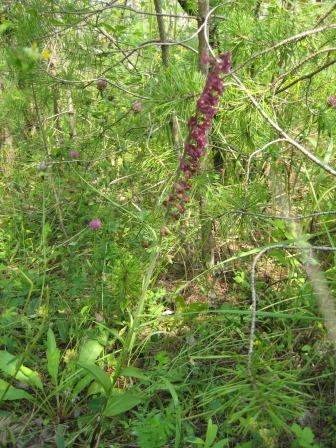
The reclaimed quarry near the village of Polotnyany Zavod used to be the place of growth of the largest in the Central federal district populations of dark red dremlik, included in the Red Data Book of the Kaluga Region. In 2014, a rare orchid became endangered and was transplanted to a quarry reclaimed with a pine near the village. Akatovo. At present, the population of the dark red dremlik in the Akatovsky quarry is more than 200 plants.
Estate park in Gorbenki village

The park of the estate in the village of Gorbenki is a park on the site of the former estate of the merchants Shaposhnikovs, in which the system of on-farm alleys of lindens and pyramidal poplars has been partially preserved. The current state of the park is assessed as unsatisfactory. There are many dead and windfall trees in it, requiring sanitary and recreational activities.
Spring key near the village Makivtsi

The spring spring near the village of Makovtsy is a descending source of fresh water with a specific flow rate of 0.3-0.5 l / s. The chemical composition of the water in it is weak. The key is buried in a metal pipe and equipped. The entrance is good, there is a parking lot.
Spring key near the village of Ogarevo
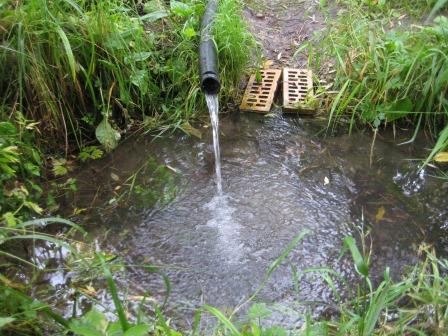
The spring key near the village of Ogarevo is a descending fresh water source with a specific flow rate of 0.2-0.3 l / s, located on the banks of the Medynka river. The water quality is good. The key is trapped with a pipe. Local residents use water from it.
Key source in the village of Tovarkovo
![]()
The spring spring in the village of Tovarkovo is an ascending source of fresh water located in the floodplain of the Shani River. The source has not been captured, but an approach has been arranged to it. Local residents do not currently use the water from the spring, as there is a large industrial enterprise next to it.
Spring key in Kondrovo
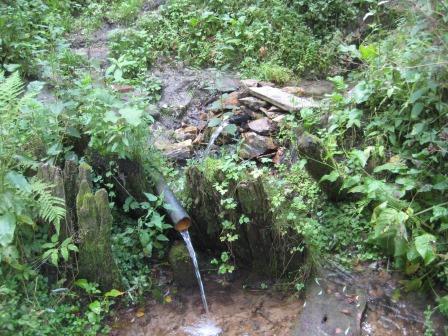
The spring key in the town of Kondrovo is a descending source of fresh water in the coastal strip of the Shani River. Captured with a metal pipe. Water from the source is used by the population for drinking and household purposes.
Spring key at the Kondrovo-Nikolskoye highway

The spring key near the Kondrovo-Nikolskoye motorway is an artificially created source of fresh water. The spring is equipped - there is a wooden blockhouse. There is a good entrance to it, a shop is installed. Previously, local residents used the water from the source. Currently, the water is stagnant.
Grove and garden of the village of Galkino
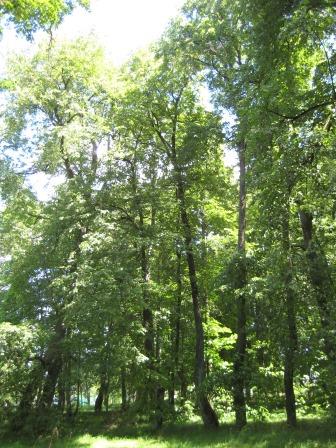
The grove and the garden are located on the territory of the village. Galkino, Dzerzhinsky district. The grove consists of oaks and lindens over 200 years old, the park - of lindens and firs 150-160 years old with an admixture of pines and oaks over 200 years old.
The layout of the park is regular, symmetrical in relation to the central alley. In the southern part, the cruciform paths form rectangular bosquets; in the northern part, the star-shaped layout of the paths lined with lindens is visible. Pines and oaks are not included in the park's layout. Next to it, the foundations of buildings can be traced and there are old lilac bushes and a small pond, now heavily overgrown.
The grass cover is natural, mainly from cereals, with a large proportion of weeds.
Park with. Begichevo

Park with. Begichevo is located on the territory of one of old estates Kaluga province, which was owned by the Begichevs, Tolstoy, Smirnov, and Trubetskoy princes since the 15th century. It has preserved a system of alleys, planting of linden, birch and poplars. The landscape part of the park consists of oak forests, as well as birch and aspen stands with hazel undergrowth.
Park v. Zheleztsovo

The village of Zheleztsevo, Dzerzhinsky District, is a former estate of the ancient family of the Turgenevs - noblemen who trace their ancestry since the time of Tsar Ivan the Terrible. The manor park is located between two ravines, along the bottom of which streams flow. Natural natural conditions made it possible to create a system of ponds here. In the regular part of the park, there are linden alleys (trees are 200-250 years old). The garden adjoining the regular part has been lost.
Spring key "St. Tikhon"

The spring spring "St. Tikhon" is a unique spring on the banks of the Veprika River, consisting of several ascending springs of the Protvinsky aquifer. Their waters are low-pressure, hydrocarbonate-calcium, slightly hard.
The source is a place of pilgrimage for believers.
Oak 300 years old in the village. Leo Tolstoy is an English oak with a height of more than 30 meters, a trunk circumference of 4 meters, a trunk diameter of 127 centimeters and an age of 300 years.
Khvastovichi district
Penevichskoe reservoir

The Penevichskoe reservoir was built on the river. Katagoscha (left tributary of the Resseta). The shores are mostly open, in the upper part of the pond are partially overgrown with bushes, woody vegetation is just beginning to appear, along the shores there are fallows and meadows. The reservoir has extensive shallow waters, while the drain from the dam is weak (stream), so the water “blooms” due to the strong reproduction of cyanobacteria and has an unpleasant odor.
The reservoir is a stopover for waterfowl and water birds. The number of birds in clusters during the spring migration reaches several dozen specimens. The reservoir is part of the key ornithological territory of Russia "Mesopotamia of Lovatyanka and Sukremenya" of federal rank.
Slobodskoe reservoir
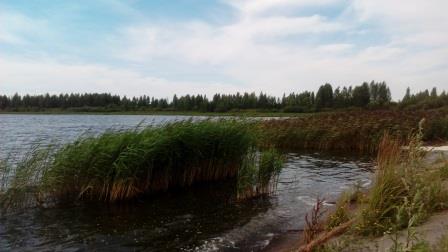
Slobodskoye Reservoir is a shallow pond formed on the Lokhova River, blocked by a dam. On the east coast there is a deposit, currently being developed for summer cottages, on the west - a boggy meadow, where rare plant species for the region are noted. The aquatic flora is dominated by standard aquatic macrophytes, mainly pondweed, and fairly common coastal thickets.
The reservoir is an important stopover and nesting place for waterfowl and near-water birds. The number of birds in clusters during the spring migration reaches several thousand specimens here. The reservoir is part of the key ornithological territory of Russia "Mesopotamia of Lovatyanka and Sukremenya" of federal rank.
Lokhova river and its floodplain
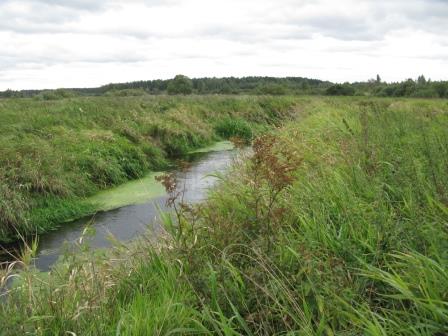
The vegetation of the banks of the Lokhova River is represented by thickets of single willows, mainly ashy willow, with the dominance of the Dvukhistochny reed, Dudnik forest and meadow fox, as well as aquatic and coastal aquatic vegetation. Among the coastal aquatic vegetation, the main dominant is the Dvukhistochny reed, the codominants are Angelica forest, Kamysh forest and Sedge acute. Among aquatic, completely submerged plants, Hornwort dominates dark green , Lesser duckweed and three-lobed duckweed, which occupy the main part of shallow waters. In some places there are Yellow capsule and Vodokras ordinary. Large macrophytes along the coast and in shallow waters are dominated by Lake Reed and Broad-leaved Rogoz; . The general list of vascular plants includes 52 species, of which 5 (Rdest is the longest, Younger shoots, Euonymus European, Zimolyubka umbrella and Thyme (Thyme) creeping or ordinary) - are included in the Red Book of the Kaluga region.
The Lokhova River and its floodplain are inaccessible and serve as a good refuge for birds and wild animals. Among the population of birds in the vicinity of the village. The Boyanovichi are dominated by synanthropic species, as well as species of the meadow-field complex, and near the Resseta River there are forest and forest species. A total of 76 bird species have been recorded here, including 3 species (White Stork, Gray Crane and Forest Lark) included in the Red Book of Kaluga Region. The floodplain of the Lokhova River is part of the key ornithological territory of Russia "Mesopotamia of Lovatyanka and Sukremia" of federal rank.
The most widespread species of mammals in the floodplain of the Lokhov River is the muskrat. Traces of its vital activity (burrows, forage "tables" extracted from the mud of the rhizome of wetland plants) are found throughout the surveyed section of the river. Bites, burrows, and summer shelters of the river beaver were also noted. The signs of the presence of the American mink and the water vole were found. Among insectivores, a water cooler was identified. It is possible that the Russian desman, a species listed in the Red Data Book of the Russian Federation and the Red Data Book of the Kaluga Region, lives in the Lokhova River.
Lovatyanka river and its floodplain
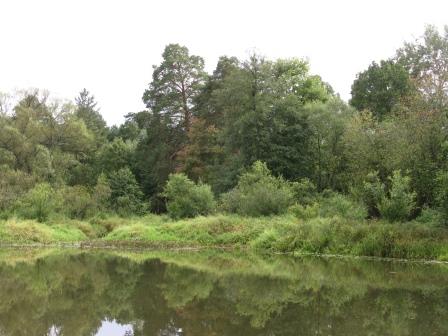
The valley of the Lovatyanka River is characterized by a rather homogeneous relief and is a flat alluvial swampy plain with separate dunes, old rivers, and river banks. The vegetation is represented by herbal pine forest, low-lying large-grass meadow and coastal water communities.
A pine forest with an eagle-grass oak is characterized by an average degree of crown closure, an average stand height and an age of about 70-90 years. The undergrowth is represented by the Common Pine, the Pedunculate Oak, the Common Spruce and the Hanging Birch. In the undergrowth, there are cordate linden, common raspberries, and singly rowan trees. The grass-shrub layer is dominated by Orlyak ordinary, Terrestrial Veinik and Oakravny bluegrass. The moss-lichen cover is represented by Kukushkin's flax and Schreber's Pleurotium.
On a low-lying large-grassed meadow meadowsweet-two-source-sedge-reed meadow in the flooded floodplain of the Lovatyanka River, the grass cover is dominated by common reed, bicustochny reed, sedge acute, meadowsweet and verbeinik ordinary . Overgrowth of the meadow community with Ashy willow, goat willow, filicolous willow and brittle willow is observed .
Coastal aquatic vegetation is represented by thickets at the very edge of the water of Common Reed and Meadowsweet, as well as overflowing Mannik . Ranunculus creeping, Forget-me-not marsh and Water mint are found singly. .
The aquatic vegetation itself is represented by Common Arrowhead, Sea Sorrel, Yellow Capsule, Common Vodokras, Past-leaved Rdest, Dark green Hornwort, Common Mnogorennik, Ryaska Trilobate and Ryaska Malaya .
Along the entire length of the Lovatyanka River, traces and gnaws of the river beaver and traces of the muskrat's foraging activity were noted. There is also a raccoon dog in the floodplain. , American mink, water vole and water cooler. Considering the high protective properties of floodplain water bodies and an extensive network of small tributaries, the possibility of preserving Russian desman and European mink in a specially protected natural area cannot be ruled out.
Vytebet river and its floodplain
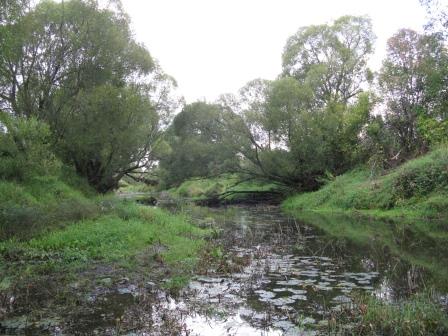
The floodplain of the Vytebet River is inaccessible for a considerable length of it and can serve as a refuge for wild animals. A mixed forest stretches along the banks. Floodplain vegetation is represented by forest and meadow complexes, meadow vegetation - dry and hygrophytic meadows, where wheatgrass, meadow fescue, Yarrow, Sour sorrel, Common Nivyanik, Soft bedstraw, Common bedstraw and Serpentine Highlander are abundant.
Coastal aquatic vegetation is represented by thickets of Bicustochnik reed, Awless Campfire, Tenacious Bedstraw, Stinging Nettle, Thistle thistle, Ivy Budra, Common Wormwood, Common Tansy and River Rage. Also in large numbers are Angelica forest, Mint water, Verbeinik ordinary, Gravilat river, Horsetail meadow, Mannik floating and Polevitsa escaping.
Aquatic vegetation is represented by Canadian Elodea, Dark green Hornwort, Yellow capsule, Common Chastukha and Common Arrowhead.
The avifauna of the Vytebet river floodplain within the boundaries of the Khvastovichi district is formed by waterfowl and near-water birds (both "local" and transit) of the river bed, temporary reservoirs of the floodplain and its swampy areas, forest species inhabiting floodplain forests and forest-covered floodplain terraces, and using the floodplain as forage lands.
Muskrat, American mink, river otter and beaver live in the floodplain of the Vytebet River. According to researchers Kh.A. Hernandez-Blanco, E.M. Litvinov and A.V. Antonevich, traces of otter activity are found throughout the river, which indicates the well-being of the population. Among the fauna of the Orlovskoe Polesye National Park, located upstream of the Vytebeti River, and the Kaluzhskie Zaseki Nature Reserve, on the territory of which the lower reaches of the river are located, a Russian desman was noted. Probably its distribution along the entire length of the Vytebet River.
The Obelna river and its floodplain
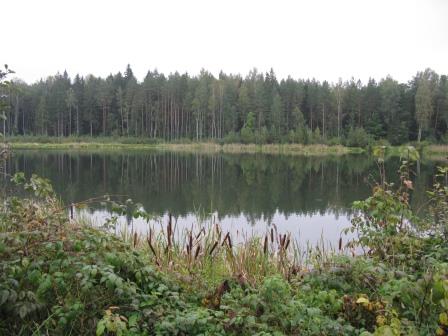
The Obelna River, within the boundaries of the Khvastovichi district, flows mainly through wooded areas, and only in the mouth part it enters a wide open area common with the Resseta river floodplain.
The vegetation of the specially protected natural area is represented by herb pine forest, black alder forest, coastal water and aquatic vegetation. The grassy pine undergrowth is dominated by Scotch Pine, Pedunculate Oak, Common Spruce and Hanging Birch. The undergrowth is formed by the bird cherry , Viburnum vulgaris, Raspberry ordinary, Blackberry gray, Rowan ordinary, Buckthorn fragile, Ash willow, Common hazel and Common hop. By coastline of the Obelna River in a narrow strip grow tall-herb black alder forests with dominance in the herbaceous layer of Stinging Nettle, Vyazolistnaya Tavolga and Sharp sedge . Coastal aquatic vegetation is represented by thickets along the water's edge of the Bicustochnik reed and Mannik giant . Co-dominants were also noted: Arrowhead ordinary, Chastuha ordinary, Sharp sedge, Black sedge, Stinging nettle, Awless fire, Bittersweet nightshade, Poisonous milestone. The aquatic vegetation itself is represented by Common Arrowhead, Yellow capsule, Common Chastukha, Ordinary Vodokras, Past-leaved Pdest, Dark green Hornwort, Mnogorennik ordinary and Ryaska triloba.
The fauna of the Obelna River and its floodplain numbers 6 species of amphibians, 4 species of reptiles, 40 species of birds and 29 species of mammals, of which 5 (Common Viper, Gray Crane, River Otter, Malaya Kutora and Forest Bat or Natusius) are listed in the regional Red Book ...
Green zone of the village of Yelensky

The green zone of the village of Yelensky is a part of a large forest area located on the territory of the Kaluga, Bryansk and Oryol regions.
The vegetation of the natural monument is represented by sphagnum and green moss spruce forests, green moss, complex and blueberry pine forests, secondary herbal birch forests, dry and hygrophytic meadows, coastal water and aquatic communities.
The level of landscape and biological diversity of the territory is assessed as high. 16 species of macromycete fungi were recorded here, including 1 species (Gyropor blue or Bruise) listed in the Red Book of the Kaluga Region, 3 species of lichens, 7 species of bryophytes, 272 species of vascular plants, including 2 species (Euonymus European, Kasatik (Iris) Siberian), included in the Red Book of the Kaluga region.
The fauna of the forest is represented by 6 species of amphibians, 4 species of reptiles, 72 species of birds and 28 species of mammals. Seasonal migrations of wild ungulates pass along it - elk, wild boar and roe deer, pine marten, polecat, forest dormouse are present. Traces of a badger and a raccoon dog were recorded. Residential passages and ground emissions of a European mole were found on the soil. Of the rare and endangered species of animals listed in the Red Book of the Kaluga Region, the Red-bellied Toad, Common Viper, Klintukh, Forest Lark, Deryaba, Crested Tit, Splyushka, Common Lynx, Forest Bat and Sionya shelf.
Green zone of the village of Hvastovichi

The green zone of the settlement of Khvastovichi is a well-preserved standard of widespread zonal landscapes.
The vegetation of the natural monument is represented by forest (coniferous and small-leaved (aspen, black alder and birch forests)), meadow and coastal aquatic vegetation.
Coniferous forests, occupying limited areas, are formed by complex spruce forests and complex pine forests. Small-leaved forests are represented mainly by aspen groves, black alder groves and grassy birch forests, developing on the site of abandoned agricultural lands.
Secondary herbal birch forests are mainly confined to the areas of burnt-out areas and clearings. Here, instead of indigenous communities, there are adventive communities dominated by Silver Birch and insignificant participation of Aspen. Under the canopy of forests, many forest and forest-meadow species are found: Kupena multiflorous, Lily of the valley May, Wild strawberry, Goldenrod or Golden rod, Horsetail. There is no moss cover.
Meadow vegetation is represented only by hygrophytic meadows, well expressed in the floodplains of small rivers and streams.
The coastal aquatic vegetation of the specially protected natural area is quite diverse, which is due to the ecological characteristics of the habitats. It reaches its maximum species diversity and abundance in sections of watercourses with low banks, usually composed of peaty-illuvial soils, in the absence of water flow or its low velocity, in small oxbows. The group of floating plants is represented by duckweed and Mnogorennik ordinary, occupying from 30 to 100% of the water surface.
In total, in the green zone of the village of Khvastovichi, 4 species of macromycete fungi and 264 species of vascular plants were recorded, including 2 species (Cinna broadleaf and Lyubka green-flowered) included in the Red Book of Kaluga Region.
The fauna of the forest is represented by 8 species of amphibians, 5 species of reptiles, 57 species of birds and 33 species of mammals. Of the rare and endangered species of animals listed in the Red Book of the Kaluga Region, there are Red-bellied toad, Common viper, Klintukh, River otter, Tiny shrew, Malaya kutora and Lesnoy bat.
Forest near the station. Tereben
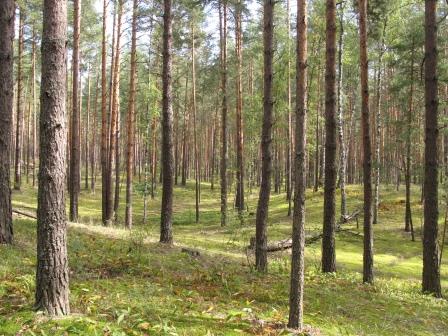
Forest near the station. Tereben ”is a large forest area located on the outwash sands of the Dnieper glaciation. Rivers and streams Koldobina, Skupa, Gorokhovka, Shkovka, Gromovoy, Radnya, Zmeika, as well as untitled streams flow through its territory. Lake Ermolovskoe and minor swamps are located in the depressions between the troughs. There are numerous outcrops of springs, some of which are quite significant in terms of debit.
The vegetation of the natural monument is represented by herbal pine forests on the dunes, herbal black alder forests, herbal lime forests, complex pine forests with an admixture of pedunculate oak, green moss pine forests dominated by blueberries, secondary herbal birch forests on burnt-out areas and clearings, as well as meadow, coastal water and aquatic communities.
The level of landscape and biological diversity of the specially protected natural area is high. There are 15 species of macromycete fungi, including 1 species (Gyropor blue or Bruise), listed in the Red Book of Kaluga Region, 2 species of lichens, 4 species of bryophytes and 320 species of vascular plants, including 15 species (Podbel ordinary, Peschanka rocky, Armeria vulgaris, Astragalus sandy, Sandy carnation, Gudayera creeping, Spherical beard, Cornflower head, Mountain acorn, Opened lumbago, Thyme (Thyme) creeping, Umbrella winter-lover, Northern Linnaeus, Low goat, Curtain-leaf gentian area.
The fauna of the forest is represented by 127 species of Lepidoptera, 7 species of amphibians, 4 species of reptiles, 72 species of birds and 35 species of mammals. Seasonal migrations of wild ungulates - Elk and Roe - pass along it. From the southern border of the territory, visits of Bison from the free-living population of the Orlovskoe Polesie National Park, included in the Red Data Book of the Russian Federation and the Red Data Book of the Kaluga Region, are regularly observed. The fox and white hare also live within the forest. There are traces of Lynx, Wolf and Brown Bear. Periodically, there are traces of the forage activity of the Common Squirrel.
Of the rare and endangered species of animals listed in the Red Book of the Kaluga Region, the hawthorn cocoon moth, the small red order ribbon, the alder arrowhead, the white striped bear, the gray pelozia, the willow ribbon, the red bellied toad, the common toad are noted on the territory of the natural monument Klintukh, Forest Lark, Deryaba, Tufted Tit, Scops owl, Common Lynx, Forest Bat or Natusius, Polchok Dormouse, Tiny Shrew, River Otter, and Brown Bear.
Forest near the station. Tereben is a valuable habitat (growth) of rare and endangered flora and fauna and is of great importance for the preservation of the biological diversity of the region.
Zhizdrinsky district
Arboretum of Zhizdra

The arboretum was founded at the end of the 19th century at the Mikhailovsky School of Gardening, which existed in the town of Zhizdra in the pre-war years, by its teachers F.A. Kryukov and F.I. Schneider. For three years, from 1896 to 1898, 140 different tree and shrub species were planted on an area of about two hectares ("Kaluga province - a geographical outline", VM Koshkarov, 1908). The park was landscaped, the paths were strewn with sand. A beautiful fountain was created, around which flower beds were located in parterre.
Currently, the arboretum has preserved various variants of combinations of trees and shrubs (Siberian larch, Siberian pine, oaks, ash trees, poplars, etc.) different years(from the end of the 19th to the middle of the 20th centuries).
The arboretum of the town of Zhizdra has a cultural, historical and recreational value for the residents of the city, scientific and environmental value for the Kaluga region as a monitoring site for tracking the processes occurring with introduced species on the territory of the Zhizdrinsky region. The level of landscape diversity of the territory is assessed as low, but at the same time there is a fairly high diversity of species uncharacteristic for the region.
Tract "Znamenskaya Gorka"

The tract "Znamenskaya Gorka" is a valuable forest area. Its upper tier is formed by a tall-stemmed Scots pine, which, according to the forestry classification, is ripe or already over-mature. Spruce and birch are occasionally mixed with the pine forest.
The undergrowth is dominated by 45-50-year-old spruce. Pine renewal was noted.
The undergrowth is formed by mountain ash, buckthorn, small-leaved linden, viburnum, European spindle tree. There are also Norway maple and occasionally English oak (along the edges), which are in a depressed state.
Lingonberries, blueberries and wild strawberries are abundant in the grass cover. Heather is found in scattered groups. Green, hypnum mosses are also developed. May lily of the valley is noted in some places.
The main nature conservation value of the Znamenskaya Gorka tract is the maintenance of biodiversity of flora and fauna, as well as the reproduction of flora and fauna and their further resettlement to adjacent territories.
Spruce-broadleaved forest

Spruce-broad-leaved forest is located on the right bank of the river. Zhizdra in the 132nd quarter of the Zhizdrinsky district forestry. The vegetation of the forest massif is represented by various variants of mixed forests with a predominance of birch, areas of pine-spruce-birch forests and woodlands, areas of spruce cultivation, uneven-aged pine cultivation areas, floodplain willow and alder forests, meadow associations of different variants, coastal vegetation of the reservoir and the river. Potya, coastal and aquatic vegetation of the reservoir on the river. Zhizdra. In the herbaceous layer, in some places, rather rare species, protected in the region, are noted - mountain sedge and black mountain range.
The current state of the forest area is assessed as satisfactory. Recreational load is moderate. A strong anthropogenic impact was noted only in the area of construction of a dam on the lower pond on the Potia River.
The spruce-broad-leaved forest is of great aesthetic and environmental importance for the residents of the city, primarily as a recreational area. The level of landscape and biological diversity of the territory is high. Most of the forest area is marked by intact natural complexes of value for the conservation of biodiversity in the region.
Fresh water source "White well"

The source of fresh water "White Well" is located on the watershed of the Lolyanka, Restitsa and Lovatyanka rivers on a flat, weakly dissected erosional plain, developed on the Cretaceous deposits of the Turonian stage of the upper section.
The source comes out to the surface in the lowland of a natural amphitheater that surrounds the local depression in a semi-circle. In the center of the depression there is a pond, which receives wastewater from all sources along the foot of the amphitheater. The flow rate of the White Well spring is about 10.8 l / s.
The spring water is ultra-fresh (mineralization - 0.17 g / l). Water temperature - 7.8 0 С. Water quality meets the established standards. Distinctive feature is the presence of iron in water (concentration - 0.12 g / l with MPC = 0.3 g / l).
Karst lake "Bottomless"
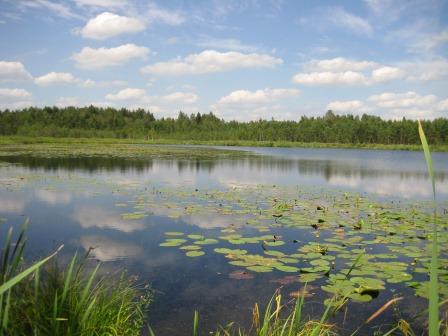
Karst Lake "Bezdonnoe" is located on the watershed of the tributaries of the Bolva and Resset rivers, on a gently hilly erosional, slightly dissected plain. It was formed in bedrocks, represented by flask and trefoil of the Santonian time of the upper part of the Cretaceous system, under which the Cretaceous-Turonian age lies. Probably, due to the suffosic erosion of chalk, the overlying rocks subsided and the Bezdonnoye Lake was formed, as well as a number of swamps around the village. Ozerskaya.
Karst Lake "Bezdonnoe" is a well-preserved wetland. Along the edge it is surrounded by a flooded swamp, which has undergone amelioration. From the side of the village. Ozerskaya, from the south and from the east a transitional, and in some places low-lying swamp, almost entirely overgrown with willow, approaches. On the northern and western shores there is a sphagnum float with a characteristic set of bog species, an open bog with tufts of cotton grass and bog dwarf shrubs. The lake is bordered on the western side by a black alder forest, and on the northern side there are areas resembling a raised bog with a pine tree and even with signs of a ridge-hollow relief - between the rows of low pines there are hollows with Sheikhzeria marsh, Ocheretnik white and other species listed in the Red Book of Kaluga Region ...
The local population actively uses the reservoir and the adjacent lands for fishing, hunting, picking mushrooms and berries, and recreation. A serious threat to the specially protected natural area is posed by recurring cases of poaching fishing using nets, poisonous substances and electric fishing rods.
Pine forest "Lukavsky"
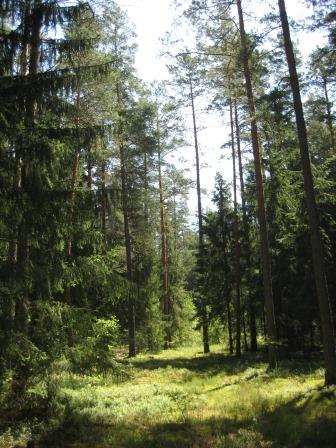
The forest pine massif "Lukavsky" is a pine massif with an admixture of birch and spruce aged 75-85 years and bonitet 1, which is of great importance for maintaining the biodiversity of flora and fauna, as well as for reproducing representatives of flora and fauna and their further resettlement to adjacent territories ... The level of landscape and biological diversity of the territory is assessed as high. In total, 116 species of vascular plants, 20 species of macromycete fungi, 3 species of amphibians, 3 species of reptiles, 60 species of birds, 22 species of mammals and 43 species of invertebrates have been identified in the specially protected natural area.
Pine forest "Dubrovsky"

Forest pine massif "Dubrovsky" - pine and spruce plantations with an admixture of birch, aspen and black alder aged 90-100 years. The level of biological and landscape diversity of the territory is low (20 species of macromycete fungi, 112 species of vascular plants, 43 species of invertebrates, 3 species of amphibians, 3 species of reptiles, 60 species of birds and 22 species of mammals). This is probably due to the fact that about half of the forest plantations within the boundaries of a specially protected natural area have been cut down in the last 10 years.
Forest area "Chernichniki"

The Chernichniki forest area is a blueberry-sphagnum pine massif with an admixture of spruce, birch and aspen. The level of biological diversity of the territory is low (20 species of macromycete fungi, 2 species of bryophytes, 113 species of vascular plants, 37 species of invertebrates, 3 species of amphibians, 3 species of reptiles, 58 species of birds, 22 species of mammals)
Settlement of forest ants "Ant Pillars" (southern cluster)
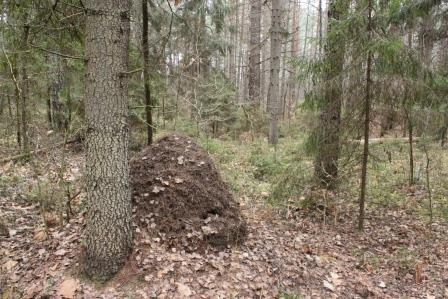
Settlement of forest ants "Ant Pillars" (northern cluster)
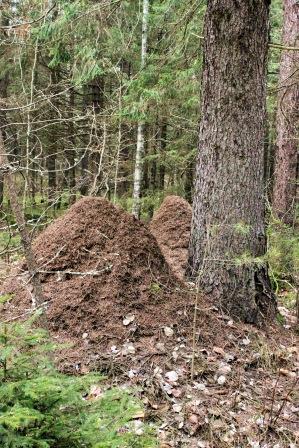
Settlement of forest ants "Ant pillars" - a group of anthills up to 1.5 meters high and 1.0-1.2 meters in diameter at the base, located in a mixed forest of different ages.
Baryatinsky district
Park v. Milotici

The estate and the garden and park ensemble were created in the 18th - early 19th centuries. The total area of the estate was more than 30 hectares. It included landscape park on the left slope of the river. Kamenka, four ponds, a system of driveways and on-farm alleys, the main house with outbuildings and the Nikolskaya Church.
At present, the landscape part of the landscape park, a dug pond of complex configuration with an island and alleys, in the forest stand of which are dominated by linden, maple and ash, are well preserved.
The park is actively used by the local population as a resting place.
Park v. Kotovo
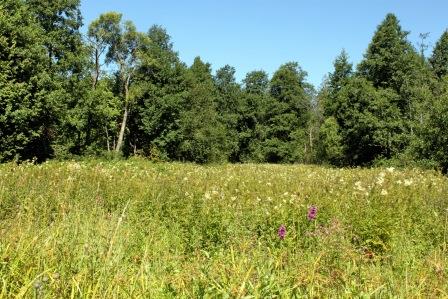
Manor park early XIX century is located in the bend of the river. Svotitsa, on its gentle right bank. Until now, there are linden alleys, fragments of broad-leaved forests, mainly linden, fragments of small-leaved forests, mainly birch forests in place of old birch alleys, floodplain black alder forests with an admixture of willows, mesophytic upland, slope and floodplain meadows and hygrophytic meadows of the floodplain of the river. Swotitsa.
The park of the village of Kotovo is of scientific importance as an example of restorative successions after the termination of direct anthropogenic impact, with the participation of well-preserved sections of linden alleys. The level of landscape and biological diversity of the territory is assessed as quite high (181 species of vascular plants, 26 species of fungi, 65 species of invertebrates and 39 vertebrates), and with the expansion of the protected zone it can be significantly increased.
Lake "Bezdon"
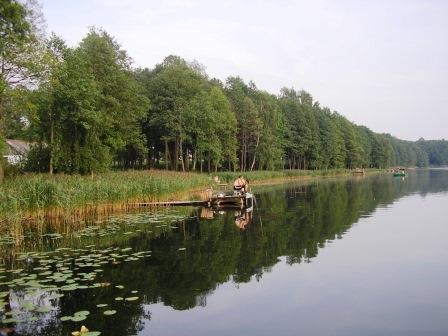
Lake Bezdon is a lake of glacial origin, filled with clean and transparent water. The maximum depth is 22 meters, the prevailing one is 9-10 meters. The area of the lake is 36 hectares.
The reservoir is an important place for the growth of rare and endangered plant species listed in the Red Book of the Kaluga Region, as well as one of the key stopping places in this part of the Kaluga Region for the passage and nesting of waterfowl and near-water birds, including those listed in the Red Book of the Russian Federation and the Red Book of the Kaluga region.
The natural ichthyofauna of Lake Bezdon has been greatly altered by fishing activities. Here they are engaged in the reproduction and cultivation of sturgeon, bream, carp, silver carp, grass carp, tench and pike, which are numerous in the reservoir and reach large sizes.
The oval-shaped lake, surrounded by forests, is unusually picturesque; it is a wonderful place for recreation for local residents and guests of the region.
Lowland swamp "Shatinsky moss"

Swamp "Shatinsky moss" is the largest example of glaciodepression in the Kaluga region and the only vast swamp, referred to the lowland and places of the transitional type, habitat (growth) of rare and endangered flora and fauna, a key ornithological territory of Russia of local rank.
The swamp has been significantly transformed by land reclamation work. A network of ditches has been laid along it - to the main main ditch crossing the swamp, there are ditches of the second order, covering the entire swamp in parallel lines.
Reclamation disturbed the hydrological regime of the natural complex, which led to a decrease (disappearance) of open areas (lenses).
Milyatinskoe reservoir

Milyatinskoe reservoir is located on the Bolshaya Vorona river. The area of the water surface is 458 hectares, and the total volume of the water body is 7580 thousand cubic meters. m. The greatest depth of the reservoir is 5 m, the prevailing depth is 1.7 m. The shores of the reservoir are heavily swampy, in some places there is an overgrowth of the flooded type, significant only in the bays. Coastal aquatic vegetation is represented mainly by river horsetail, broad-leaved cattail, large manna, southern reed, acute sedge and other species. Remarkable are the finds of the marsh fern telipteris and the flowering plant of the common tail tails inhabiting the swampy, hard-to-reach rafts and bogs. Among medicinal plants, the marsh cinquefoil, meadow meadowsweet, river gravilat, galangal, blue cyanus, field mint and other typical meadow plants were identified.
Mosalsky district
Pine forest of Mosalsk

The pine forest of the city of Mosalsk is a typical forest area, the predominant species in which is spruce, in some places - with an admixture of birch, linden and pine. The part of the pine forest farthest from the road is a zonal, well-preserved, uneven-aged spruce forest, in places - grassy, in places - green moss, in places - with developed broad-leaved undergrowth and shrub layer. Near the Mozhayka River, pine stands up to 100 years of age prevail.
In the undergrowth, common spruce, common mountain ash, heart-shaped linden and plane maple are noted. The undergrowth consists mainly of plane-tree maple, mountain ash, common buckthorn, common hazel, heart-shaped linden, forest raspberries, glaucous blackberries, warty euonymus.
The herbaceous cover is dominated by male dwarf, meadow horsetail, double-leaved mine, wild strawberry, oxalis, creeping tenacious and other plant species typical of coniferous forests. In some places, thickets of blueberries and lingonberries are abundant. The parts of the forest adjacent to the Mosalsk-Kaluga highway and the city of Mosalsk are significantly disturbed, and weedy, ruderal species are noted among the trivial plant species.
Tract "Proydevo"
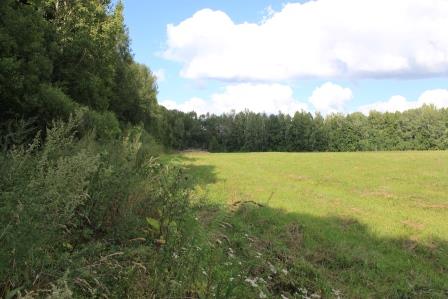
The tract "Proydevo" is a park, laid out on the right slope of the river valley. Perekshi and having an irregular layout. It has preserved old-growth broad-leaved trees: oaks, lindens, maples, white poplars. In the herbaceous layer, aboriginal plants of a broad-leaved forest (black spikelet, Kashubian buttercup, musky strawberry, amazing violet, etc.) coexist with introduced species. Some of them (aralia, goryanka) were recorded in the territory of the Kaluga region only in this park. Taken together, they represent a highly decorative, exotic community that has evolved over several decades.
Lyudinovsky district
Lake "Lompad" with adjacent lands

Lake "Lompad" or the Lyudinovskoye reservoir is located on the Nepolod River to the north of the town of Lyudinovo and is the largest artificial reservoir in the Kaluga region. The vegetation of its shores is represented by small areas of coniferous forests with broad-leaved elements, small-leaved forests of black alder and silver birch, small fragments of broad-leaved, mainly linden forests, upland forb and hygrophytic tall-grass meadows, aquatic and coastal aquatic vegetation. A total of 330 species of higher vascular plants were recorded here, among which 8 (common sheep, purple reed grass, high fescue, panicle sedge, thick-leaved stellate, Selkirka violet, umbrella winter-lover, marsh turkey) are listed in the Red Book of Kaluga Region.
Rich and varied animal world water body and adjacent lands - more than 30 species of mammals, including: wild boar, European roe deer, European elk, wolf, common fox, raccoon dog, pine marten, ermine, polecat, common beaver, muskrat, American mink and otter, and 17 fish species (roach, perch, bream, rudd, ruff, pike and carp). Among amphibians there are the common newt, the common and green toads, the lake, pond, sharp-muzzle and grass frogs are numerous; of the reptiles - the common viper and the common snake, as well as the quick and viviparous lizards.
The reservoir is part of the key ornithological territory of Russia "Lyudinovskie Lakes" of local rank. The incomplete list of birds registered in the specially protected natural area numbers more than 80 species, among which 7 (European black-throated loon, great egret, white stork, gray crane, great snail, river tern, blackbird warbler) are rare.
Lake "Lompad" with the adjacent lands is of exceptional value for the preservation of unique and exemplary natural complexes and objects and biological diversity of the Kaluga region.
Tract "Molevskoe"

The Molevskoe tract is located at the watershed of the Peretesna and Nepolod rivers, between two swampy gullies, 1.5 km northwest of the village of Paloma. It is a community of dry meso-oligotrophic meadows, partially overgrown with shrubs, on the site of the former Mola estate.
In the tract, old dying apple trees, home plum, home pear, English oak, drooping birch, common lilac, individual bushes of ash willow, laxative tinsel, cinnamon rose hips, black currants have been preserved. There are linden plantings along the perimeter of the estate, as well as along the roadsides and on the road at the entrance to the estate. Together with the cordate linden, the drooping birch and the pedunculate oak grow. Aspen is found singularly. The undergrowth consists mainly of forest honeysuckle and brittle buckthorn. In the herb-dwarf shrub layer, the following are present: common runny, oak grass, meadow bluegrass, forest bush .
The fauna of the tract is represented by 1 species of reptiles, 4 species of mammals and 43 species of birds, of which 1 species (Deryaba), listed in the Red Book of the Kaluga Region.
Yukhnovsky district
City forest in Yukhnov
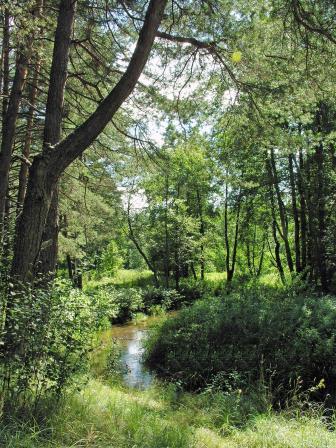
The urban forest in the city of Yukhnov is a forest area that performs environment-forming functions, including maintaining the purity of the atmospheric air and, as a result, creating the prerequisites for health-improving recreation, which is a regulator of the flow of surface and underground waters and is of aesthetic importance for the residents of the city.
The predominant species in the first tier of the forest is pine of I-II quality classes. The age of the pine forests varies from 15 to 160 years. In the southern part of the forest, separate small areas of spruce are observed. In the second tier, both broad-leaved species - linden, maple, less often oak, and small-leaved species - birch, aspen (in some places they go into the first tier) are noted, shrubs are abundant - mountain ash, hazel. In the third and fourth tiers, grass cover has developed in places. Green moss fragments of pine and spruce forests are not uncommon.
In the forest, 297 species of vascular plants were recorded, including 3 species (Gudaira creeping, Zimolyubka umbrella, Linnaeus northern) listed in the Red Book of Kaluga Region, 5 species of amphibians, 3 species of reptiles, 41 species of birds, including 1 species ( Crested Tit), listed in the Red Book of the Kaluga Region, and 17 species of mammals.
1The article is devoted to topical issues of the functioning of specially protected natural areas of federal, regional and local importance. A critical analysis of legislative documents governing the creation and development of specially protected natural areas has been carried out. The inconsistencies of the provisions of the federal law on specially protected natural areas with the provisions of the Land Code of the Russian Federation in terms of individual property rights to land resources were established. The main characteristics of different categories of specially protected natural areas are considered. The most common problems of the effective functioning of specially protected natural areas have been identified. Particular attention is paid to management issues land resources within the boundaries of specially protected natural areas and the search for possible ways to attract additional sources of funding through the development of educational ecological tourism. The necessity of developing a strategic document for the development of specially protected natural areas as an integral part of the strategy of socio-economic development of the region and the Russian Federation has been substantiated.
specially protected natural areas
land resources of specially protected natural areas
land use
problems of development of specially protected natural areas
educational ecological tourism
1.Law of the Republic of Buryatia dated December 29, 2005. No. 1438-III "On specially protected natural territories of the Republic of Buryatia" [Electronic resource]. - Access mode: http://base.garant.ru/29509190/ (date of access 11.08.2015).
2. The Land Code of the Russian Federation dated October 25, 2001 No. 136-FZ [Electronic resource]. - Access mode: http://www.consultant.ru/document/cons_doc_law_33773/ (date of treatment 09/02/2015).
3.Order of the Government of the Russian Federation of December 22, 2011. №2322-r Concept of development of the system of specially protected natural areas of federal significance for the period up to 2020 [Electronic resource]. - Access mode: http http://www.consultant.ru/document/cons_doc_LAW_124870/ (date of access 27.08.2015).
4. List of specially protected natural territories of regional and local significance [Electronic resource]. - Access mode: http://www.minpriroda-rb.ru/content/oopt/ (date of access 09.15.2015)
5. Federal Law of the Russian Federation of March 14, 1995 No. 33-FZ "On Specially Protected Natural Areas" [Electronic resource]. - Access mode: http://base.garant.ru/10107990/ (date of treatment 09/02/2015).
In accordance with the current legislation, specially protected areas include lands that have special environmental, scientific, historical and cultural, aesthetic, recreational, health-improving and other valuable value.
The development of a network of specially protected natural areas (hereinafter SPNA) is one of the mechanisms for ensuring the long-term conservation of biological and landscape diversity both at the national and regional and international levels.
The regulation of relations in the field of specially protected natural areas (hereinafter SPNA) in Russia is primarily carried out by the Federal Law of the Russian Federation of March 14, 1995. No. 33-FZ "On Specially Protected Natural Areas", as well as the Federal Law of the Russian Federation of January 10, 2002. No. 7-FZ "On protection environment", The Land Code of the Russian Federation of October 25, 2001 No. 136-FZ, a number of laws of the constituent entities of the Russian Federation and by-laws.
Specially protected natural areas are of exceptional importance for the conservation of biological and landscape diversity as the basis of the biosphere. Taking into account the increasing threats of natural disasters and changes in the natural environment as a result of economic activities, the main purpose of specially protected natural areas is:
Maintaining the ecological stability of territories significantly changed by economic activities;
Natural reproduction of valuable renewable natural resources;
Maintaining a healthy living environment for people and creating conditions for the development of regulated tourism and recreation;
Implementation of environmental education programs;
Conducting fundamental and applied research in the field of natural sciences.
PAs are subdivided into objects of federal, regional and local significance. Federal Law of the Russian Federation of March 14, 1995. No. 33-FZ established the following categories of PAs of federal and regional significance (table).
Until 28 December 2013 Federal Law of the Russian Federation of March 14, 1995. No. 33-FZ provided for one more category of protected areas of federal, regional and local significance - “medical and recreational areas and resorts”. Nevertheless, in a number of constituent entities of the Russian Federation, this category is still preserved as PAs of regional and local significance, which is enshrined in the regulations of the constituent entities of the Russian Federation.
The laws of the constituent entities of the Russian Federation may establish categories of PAs of local (municipal) significance, as well as categories of PAs of regional significance supplementing Federal Law No. 33-FZ. The composition and characteristics of additional categories of protected areas are determined by natural and socio-economic conditions, cultural and historical characteristics, etc.
Currently, additional categories of protected areas of regional and local significance have been established in about a third of the constituent entities of the Russian Federation. In total, in Russia there are about 30 additional categories of protected areas of regional significance, and about 50 of local significance. These additional categories include: resource reserve; protected landscape; unique lakes; rest zone; sacred natural objects; children's ecological park, urban forest, protected area, etc. For example, in the Republic of Buryatia there are: recreational areas of regional significance; recreational areas of local importance; natural micro-reserves of regional significance; natural and historical complexes of regional significance.
In the structure of Russian PAs, the main part is PAs of regional significance, which account for about 85% of the total number of PAs and about 60% of the total area. For PAs of local (municipal) significance, these indicators are approximately 13 and 14%. Among the protected areas of regional and local significance in the Russian Federation, in terms of number, natural monuments absolutely prevail, which in aggregate amount to more than 8 thousand. PAs. Moreover, their share in the total area of protected areas is very small - less than 0.2%.
The system of protected areas of federal significance today includes 103 state nature reserves, 47 national parks, 65 federal reserves. The total area of federal protected areas is about 2.7% of the territory of Russia, excluding numerous protected areas of regional significance.
Lands of this category include specially protected natural areas occupied by state nature reserves, national and natural parks, state nature reserves, natural monuments, dendrological parks, botanical gardens, health-improving areas and resorts. In addition to natural areas, the category of lands includes land plots occupied by objects of physical culture and sports, recreation and tourism, historical and cultural monuments. A special protection regime has been established for this category of land. In order to ensure their safety, they are withdrawn from economic use in whole or in part. The legal regime of land plots classified in this category depends on the legal regime of the territories on which they are located, or the objects that are located on them.
Buryatia occupies a special place in the history of nature reserve management in Russia. It was on the territory of modern Buryatia that the first state reserve of Russia, Barguzinsky, was founded in 1916. He actually laid the foundation for the modern specially protected natural areas of Russia. Currently, the Barguzinsky Reserve is complex. In 1986, by decision of UNESCO, it was assigned the status of a biosphere.
A developed network of protected areas created in Buryatia, which includes state nature reserves, National parks, state nature reserves, natural monuments, medical and recreational areas and resorts, covers the most valuable and poorly transformed landscapes of the republic. The main task of the SPNA in Buryatia is the protection of Baikal and the Baikal natural territory.
The nature reserve fund of PAs in the Republic of Buryatia includes PAs:
a) federal significance - with a total area of 2,412,122 thousand hectares, which is 6.86% of the territory of the republic. In Buryatia, there are eight specially protected natural areas of federal significance. Tri-state nature reserves, with a total area of 778.16 thousand hectares: - "Baikal State Natural Biosphere Reserve" - in the Selenginsky, Kabansky and Dzhidinsky regions - 165.7 thousand hectares, the state natural biosphere reserve "Barguzinsky" - in the North-Baikalsky region with an area of 374 , 3 thousand hectares, the state natural reserve "Dzherginsky" - in the Kurumkansky region - 238.1 thousand hectares; two national parks with a total area of 1452.664 thousand hectares: "Zabaikalsky national park"And the national park" Tunkinsky ". There are also three state nature reserves of federal significance, with a total area of 181.3 thousand hectares: Kabansky, Altacheysky and Frolikhinsky;
b) of regional significance - 13 zakazniks and 1 natural park, 1 recreation area, 62 natural monuments. Of these, 11 are located in the Baikal natural territory, including 4 in the Central ecological zone of the Baikal natural territory;
c) 5 recreational areas of local importance.
In order to improve the regional regulatory framework for protected areas, it was adopted and entered into force on July 1, 2006. Law of the Republic of Buryatia dated December 29, 2005. No. 1438-III "On specially protected natural areas of the Republic of Buryatia", which regulates relations in the field of organization, protection and use of protected areas of the Republic of Buryatia. In accordance with this law, the "Procedure for organizing SPNAs of regional and local significance in the Republic of Buryatia" (Decree of the Government of the Republic of Buryatia No. 213 dated July 11, 2006) and "Procedure for the protection of SPNAs of regional significance in the Republic of Buryatia" (Decree of the Government of the Republic of Buryatia dated 21.12 .2006, No. 408).
Since 2005, the functions of the Directorate of Specially Protected Natural Areas of Regional Significance have been carried out by the State Institution "Nature Management and Environmental Protection of the Republic of Buryatia" (State Institution "Burpriroda") created by the Decree of the Government of the Republic of Buryatia dated July 15, 2005 No. 231.
Research today state of the art and the prospects for the development of protected areas is gaining special relevance, and therefore 2016 was named the year of specially protected natural areas.
An extremely important condition for the successful implementation of the management and development strategy of protected areas is the identification and recognition of existing obstacles and limitations. It is necessary to highlight the main problems that hinder the effective functioning of the PA network:
Lack of effective state management of the PA system both at the federal and regional levels, as well as coordination of activities between these levels;
Insufficient funding of measures for the protection, development of the PA system;
Low efficiency of attracting other funding sources to PAs, incl. private investment;
Imperfection of the regulatory and legal framework for the management of the PA system, the lack of legislative consolidation of such basic concepts as “PA system”, PA management structure; the presence of gaps and contradictions in the current legislation;
Lack of medium and long-term strategic planning documents for the development of protected areas;
Unresolved issues of land management within protected areas;
Insufficient level of environmental awareness of society.
Among the above problems, a special role is played by the problem of land management in protected areas as the basis for their functioning. It should be noted that this aspect is poorly developed and insufficiently researched. In view of the wide legal framework, it seems necessary to consider the issue of land use within the boundaries of a particular protected area belonging, for example, federal protected areas.
Land plots of specially protected natural areas are characterized by a special civil law regime.
Law No. 33-FZ establishes the following rules on rights to land plots within certain categories of protected areas: land plots (including land plots on which forests are located) within the boundaries of state nature reserves, national parks, natural parks, dendrological parks and botanical gardens are provided to federal state budgetary institutions that manage these protected areas for permanent (unlimited) use.
Consequently, not all land within the boundaries of a particular protected area is provided on the basis of the right of permanent (indefinite) use to one or another institution that manages a particular protected area. This is confirmed, in particular, by the fact that within the boundaries of certain protected areas there may be land plots belonging to completely different persons. Of great importance is the provision of the law that land plots within the boundaries of state reserves and national parks are not subject to privatization.
In the literature, as well as in the legislation, the problems of acquiring, exercising, terminating and protecting rights to these land plots are ignored, although when creating many specially protected natural areas, the property interests of many citizens are affected, primarily those living within it and owning land plots on various rights ...
Article 95 of the Land Code of the Russian Federation states that on lands of specially protected natural areas of federal significance, it is prohibited:
1) the provision of gardening and summer cottages;
2) the construction of highways, pipelines, power lines and other communications, as well as the construction and operation of industrial, economic and residential facilities not related to activities permitted in specially protected natural areas in accordance with federal laws;
3) movement and parking of mechanical Vehicle not related to the functioning of specially protected natural areas, driving livestock off highways;
4) other types of activities prohibited by federal laws.
Natural resources and real estate of state nature reserves are completely withdrawn from circulation, and in accordance with clause 4 of article 27 of the Labor Code of the Russian Federation, land plots occupied by state natural reserves and national parks are classified as property withdrawn from circulation.
The provision of clause 2 of article 6 of the Law on PAs on the prohibition of termination of rights to land plots and others raises questions Natural resources(including by way of withdrawal), which are included in state nature reserves. Most likely, we are talking about a ban on the rights of private owners who lived at the time of the creation of the reserve within the territory of the protected area.
In a disputable state are land plots of state reserves, natural monuments, dendrological parks and botanical gardens, medical and recreational areas and resorts (formed before 2013), which can be attributed to both federal protected areas and regional protected areas. that the land plots that belonged to other owners at the time of the creation of the protected areas were not seized, often within the territory of one protected area there are various forms of ownership.
Depending on the degree of restriction of the right to use and dispose of land plots of the Russian Federation, constituent entities of the Russian Federation, municipalities, the system of restrictions includes:
Complete restriction (state reserves);
Partial restriction (limited land plots located in certain functional zones of national and natural parks can be transferred to individual entities on a lease basis) and only for the implementation of those activities that allow for the intended purpose and permitted use of the main land plot on which the national park is located) ;
No restrictions on the disposal of public land plots (dendrological parks, botanical gardens).
In the Russian Federation, due to the spontaneous development in the 90s. practically all spheres of the economy and, consequently, imperfect legislation and peculiarities of the mentality of citizens, a difficult situation has developed with unresolved problems of proper registration of ownership or other rights to land resources within the boundaries of protected areas.
A difficult situation regarding the regulation of land relations remains in the Tunkinsky National Park: 25 thousand. Inhabitants of the Tunkinsky district of the Republic of Belarus in 35 settlements are deprived of the right of ownership of land, since have not previously registered their rights. In 1991, this national park was created, today, its area occupies 80% of the municipal district. Since 2012, the Rosreestr Office for the Republic of Belarus does not register ownership of land plots for persons living in this territory.
At present, legislative initiatives have been submitted to the State Duma of the Russian Federation: it is proposed to introduce a new provision in the Federal Law "On Specially Protected Natural Areas", thanks to which it will be possible to recognize the territories of reserves as having lost their natural value and exclude them from the list of protected objects. Changing the boundaries of reserves is prohibited by the current legislation. The loss of conservation status by nature reserves or their individual territories will be possible following the results of the state ecological expertise. After that, the decision will be made by the executive branch: the government of the Russian Federation, regional authorities or local self-government bodies, respectively, depending on the status of the reserve.
In our opinion, the consequences of the adoption of the planned amendments to the legislation will have an ambiguous effect on the improvement of the land management system of protected areas. On the one hand, municipalities will be able to develop and equip their territories without violating the current legislation. On the other hand, economic entities that apply for protected areas are interested in the opportunity to change the boundaries of reserves. The adoption of such a rule may lead to an increase in illegal grounds for the recognition of territories that have lost their natural value, for example, fires.
If we talk about the newly formed PAs, then it is necessary to approach it in a balanced way from the standpoint of the existing experience in land use. The procedure for the provision of land plots and residential premises can be applied to replace those seized to form the boundaries of protected areas; Conducting ecological zoning in the newly created and already existing PAs by the type of functional zoning in national parks. Thus, this will allow the formation of zones occupied by settlements, and citizens will be able to register property rights.
The solution to the problem of lack of funding for protected areas can be attributed to the stimulation of ecological educational tourism in protected areas. The strategy for the development of cognitive tourism in specially protected natural areas (PAs) of federal significance for the period up to 2020 was approved by the Ministry of Natural Resources of the Russian Federation. It is important that the development of educational tourism should not contradict the key purpose of protected areas - the preservation of biological and landscape diversity, scientific work. In connection with the approval of the strategy, amendments will be made to the federal law "On Specially Protected Natural Areas". The amendments will harmonize environmental legislation with the approaches of the UNESCO Man and the Biosphere Program. In particular, the changes will affect the issues of functional zoning of territories included in the international network of biosphere reserves. The Republic of Buryatia has developed a project for the development of ecotourism in the protected area "Reserved necklace of Baikal". The Russian government sets the task of developing ecotourism in the Baikal nature conservation area, primarily domestic tourism. In the federal target program "Protection of Lake Baikal and the socio-economic development of the Baikal natural territory" one of the key tasks is to increase the efficiency of using the recreational potential of protected areas. In the current conditions, this is still a kind of import substitution of the more expensive overseas recreation. Nature reserves and national parks are already solving this problem by creating visitor centers, paving ecological trails, equipping tourist parking lots. Now it is very important that their efforts are supported by tour operators and businesses, which could, on the basis of public-private partnership, be engaged in expanding tourism infrastructure in the interests of regulated recreation and ecological tourism in protected areas.
The identified main problems require an immediate solution; this will largely be facilitated by the development and implementation of the Strategy for the Development of Protected Areas of the Russian Federation and the regional concepts for the development of regional networks of protected areas adopted on its basis.
The implementation of the strategic document will make it possible to achieve the following key results:
Creation of a unified, spatially and functionally related managed system of PAs as an effective mechanism for the preservation in the natural state of reference, typical and unique natural complexes and ecosystems, historical, ethnic, cultural, biological and landscape diversity, habitats of flora and fauna objects, their genetic fund in the boundaries of the protected areas themselves and ensuring the sustainable quality of the environment of the adjacent territories;
Adoption of a package of normative legal acts aimed at improving the public administration system of the PA system, incl. in the field of land relations;
Integration of the PA system into the processes of socio-economic development of the region through the formation of a set of necessary conditions for economic growth and development based on rational use natural resource potential the region, maintaining an ecologically stable and healthy living environment, High Quality life, preservation of objects of national natural and cultural heritage for future generations;
Improving the quality and expanding the range and availability of environmental, educational, recreational, health-improving, information and other services provided to the population on the territory of protected areas;
Development of public-private partnership mechanisms, creation of a favorable climate for the development of environmentally-oriented entrepreneurship, attraction of private investment in protected areas for the creation of infrastructure facilities;
Ensuring the ecological stability of urbanized ecosystems and territories significantly changed by economic activities;
Fulfillment of the international obligations of the Russian Federation in the field of preserving biological diversity and the habitat of objects of the animal world;
Enhancing the role of protected areas in the formation of a positive image of the Russian Federation and the Republic of Buryatia at the Russian and international levels.
The article was prepared with the support of the RHNF project No. 15-32-01247 "Environmental audit in specially protected natural areas: development of scientific foundations and economic tools" SRSTI code 06.61.33.
Bibliographic reference
Yakovleva I.A. CURRENT ISSUES OF THE SYSTEM DEVELOPMENT OF SPECIALLY PROTECTED NATURAL TERRITORIES // Fundamental Research. - 2015. - No. 12-2. - S. 438-443;URL: https://fundamental-research.ru/ru/article/view?id=39435 (date accessed: 10/27/2017). We bring to your attention the journals published by the "Academy of Natural Sciences"
In accordance with the Federal Law "On Specially Protected Natural Areas", specially protected natural areas of various forms have been created in our country. They are most diverse at the regional and local levels. The central place is occupied by the largest in area natural parks and the most numerous are reserves and natural monuments.
Natural parks are a relatively new category of specially protected natural areas in Russia. This form, despite its exceptional relevance from both an environmental and a recreational point of view, actually came into practice only quite recently - in the 90s. According to Art. 18 of the Law "On Specially Protected Natural Areas", natural parks are nature conservation recreational institutions under the jurisdiction of the constituent entities of the Russian Federation, the territories (water areas) of which include natural complexes and objects of significant ecological and aesthetic value, and are intended for use in nature conservation, educational and recreational purposes.
The specific tasks of these parks include:
- preservation of the natural environment, natural landscapes;
- creation of conditions for recreation (including mass recreation) and preservation of recreational resources;
- development and implementation of effective methods of nature protection and maintenance of the ecological balance in the conditions of recreational use of the territory.
The key difference between natural parks lies in their subordination not to the federal structure, but to the regional one. This logically follows from the idea that the most valuable natural objects are subject to protection at the highest (federal) level in the status of national parks, and less significant ones are preserved under regional patronage, that is, in the status of natural or regional parks.
According to the Law "On Specially Protected Natural Areas", natural parks are located on lands provided to them for perpetual (permanent) use, in some cases - on the lands of other users, as well as owners.
To date, there are 54 natural parks in the country, and they are almost equally distributed between the European and Asian parts of Russia.
Their total area is 15.4 million hectares, or 0.9% of the country's area. According to the Forest Code of the Russian Federation, the forests of natural parks belong to the forests of the first group.
Zakazniks are territories (or water areas) that are of particular importance for the preservation or restoration of natural complexes or their components and maintenance of the ecological balance.
Landscape reserves are intended for the preservation and restoration of natural complexes (landscapes), biological (botanical and zoological) - for the preservation and restoration of rare and endangered species of plants and animals (including valuable species in economic, scientific and cultural terms), hydrological (bog, lake, sea, river) - for the preservation and restoration of valuable water bodies and ecosystems, geological - for the preservation of valuable objects and complexes of inanimate nature, paleontological - for the preservation of fossil objects, etc.
In zakazniks economic activity is allowed only to the extent that it does not disturb the peace and does not harm the protected objects.
At present, there are 2831 regional nature reserves in Russia. Their total area is 72.4 million hectares, or 4.4% of the country's area. In some regions they are single, in others, on the contrary, there are several hundred. For example, in the Tver region alone, the number of reserves reaches almost 600.
The bulk of the zakazniks belongs to the category of hunting reserves, which are under the jurisdiction of the Ministry of Agriculture of Russia. The most widespread species reserves are for beaver, elk, wild boar, roe deer, sable, muskrat, upland game, etc. Specifically, species reserves have played a significant role in the preservation and restoration of the most valuable game animals in our country.
Natural monuments are unique, irreplaceable, ecologically, scientifically, culturally and aesthetically valuable natural complexes, as well as objects of natural and artificial origin. This term was first introduced by the famous naturalist A. Humboldt. Like reserves, this category of specially protected natural areas is most common at the regional level - more than nine thousand objects with a total area of 4.0 million hectares, or 0.2% of the country's area. Natural objects and complexes declared as natural monuments are completely withdrawn from economic use. Any activity that harms the natural monument and the natural environment around it or worsens the condition and protection of the monument is prohibited. As well as nature reserves, natural monuments are extremely diverse in the types of protected objects. They can be both complex, including a number of protected objects of various categories, and highly specialized. The most widespread are landscape, botanical, dendrological, zoological, hydrological, geological, paleontological, geomorphological, speleological, pedological (soil) natural monuments. Natural and historical monuments of nature occupy a special place among them. This category of specially protected natural areas includes monuments of garden and park art, old estates of memorial and artistic significance, complexes of city parks and gardens.
Among the forms of specially protected natural areas intended for the preservation of natural and historical complexes, it is necessary to note the museums-estates, museums-reserves, memorial museums. All of them are associated with the names of great Russian writers, poets, painters, sculptors, etc. As a rule, these museums are under open air form an inseparable unity with their natural environment, artificial or natural natural landscapes. In many reserve museums, nature is one of the main values. In particular, this applies to the palace and park ensembles of the surroundings, the Solovetsky Museum-Reserve, the Natural-Archaeological Museum-Reserve "Divnogorie", etc.
In addition to the forms discussed above, the group of specially protected natural areas of the regional and local levels, by decision of the administration of the region or the municipality, may include such forms as medical and recreational areas, dendrological parks and botanical gardens, green zones settlements, dormant zones in, water protection zones of small rivers and springs, ravine forests of anti-erosion significance, recreational zones of cities, natural resource reserves, protected natural and anthropogenic landscapes, etc.

Analysis of the structure of specially protected natural areas in Russia shows that the most representative in terms of area is the group of reserves. They make up 37% of the total area of the country. Approximately one fourth of them falls on the share of natural resource reserves (25%) and state nature reserves (23%). National and natural parks occupy 3% and 9%, respectively. Dendrological parks, botanical gardens, medical and recreational areas and protected natural and anthropogenic landscapes make up about 1% in total.
The share of all territories of federal significance is 28%; the rest of the area falls on specially protected natural areas of regional and local importance.


